#Japanese Emperor's Army Air Force - Dainippon Teikoku Rikugun Kōkūbutai: #Mitsubishi #A6M "#Zero-Sen" - '#Zeke' - 零式艦上戦闘機(れいしきかんじょうせんとうき)は WW-TWO #Pearl-Harbor & #Kamikaze & #Geisha (Wikipedia)
Refreshed! to-116%-28.03.2019.-Regulated++++++++++:++:+++:+
above: HiRes! Mitsubishi A6M "Zero" - 'Zeke' 3D Cutaway
零式艦上戦闘機(れいしきかんじょうせんとうき)は、第二次世界大戦期における日本海軍(以下、海軍と表記する)の主力艦上戦闘機。零戦(ぜろせん)の略称で知られている(以下、零戦と表記する)。試作名称は十二試艦上戦闘機。連合軍側のコードネームは『ZEKE(ジーク)』。 支那事変(日中戦争)から太平洋戦争初期にかけて、2,200 kmに達する長大な航続距離・20mm機関砲2門の重武装・優れた格闘性能を生かして、米英の戦闘機に対し優勢に戦い、米英のパイロットからも「ゼロファイター」と呼ばれた。太平洋戦争中期以降には、アメリカ陸海軍の対零戦戦法の確立やF4UコルセアやF6Fヘルキャットなど新鋭戦闘機の大量投入で劣勢となったが、後継機の開発の遅れによって、終戦まで日本海軍航空隊の主力戦闘機として運用された。また、用途も拡大して、戦闘爆撃機や特攻機としても使われた。
開発元は三菱重工業(以下「三菱」という)。三菱に加え中島飛行機でもライセンス生産され、総生産数の半数以上は中島製である。生産数は日本の戦闘機では最多の約10,000機[1]。
各型の零戦の詳細については、「零式艦上戦闘機の派生型」を参照。https://ja.wikipedia.org

above & below NEW!: HiRes! Cutaway Drawings
above: MedRes! Mitsubishi A6M2 "Zero" - 'Zeke' japanese fighter:
Hu. text: Az A6M (japánul: 零式艦上戦闘機, れい しき かんじょう せんとうき, átírva rei siki kandzsó szentóki, azaz „nulla típusú elfogó vadászrepülőgép”) nagy hatósugarú japán vadászrepülőgép volt a második világháborúban, melyet a Császári Haditengerészet megbízásából fejlesztettek ki flottalégvédelmi feladatokra. A flotta 1940-ben rendszeresítette, ebben az időben a csendes-óceáni térség inváziója alatt mind sebességben, mind manőverezőképességben felülmúlta a legtöbb, térségben rendszeresített brit, francia és amerikai vadászrepülőgépet. A kiválóan kiképzett japán pilóták jelentős sikereket értek el az 1942-es év második feléig, légigyőzelmi arányuk 12:1 körül volt. A japán repülőgép-hordozókról és szárazföldi légi támaszpontokról bevetett repülőgépek hatósugarukon belül hathatós légi fedezetet adtak a japán fegyveres erőknek. A háború előrehaladtával azonban előjöttek gyengeségei: a kisméretű csillagmotor elégtelen teljesítménye miatt a sárkány páncélozása és nagyobb űrméretű fegyverek alkalmazása nem volt megoldható, az öntömítő üzemanyagtartályokkal nem rendelkező gépeket egy ellenséges sorozat rendszerint fáklyává változtatta, míg a szövetséges típusok általában a több, kis űrméretű találatot követően is haza tudtak érni. A Guadalcanali hadjáratalatt a korábban a „Repülő tigrisek” által kidolgozott légiharc-eljárásokat továbbfejlesztve az amerikai pilóták F4F Wildcat típusaikkal egyenrangú ellenféllé váltak. Az F6F Hellcat, F4U Corsair, Spitfire és Seafire típusok elterjedésével azonban a Zero elavult, váltótípusai csak kis darabszámban tudtak megépülni, tényleges leváltása a háború végéig megoldatlan maradt. A háború utolsó évében főként mint kamikaze, öngyilkos repülésekre alkalmazták. A japán repülőgépgyártás legnagyobb darabszámban gyártott repülőgépe lett.
A szövetséges pilóták csak Zero-nak becézték, hivatalos szövetséges kódneve Zeke, az A6M3-nak Hamp,illetve az úszótalpakkal felszerelt A6M2–N-nek Rufe. ... hu.wikipedia.org/wiki/A6M_Zero

above: NEW pic!
above: NEW! MedRes! Mitsubishi A6M 'Reisen' "Zero" fighter in a Arizona desert
above: NEW! NoHigher! Hu. text: a "Micsu"
above: NEW! MedRes! Original photo: Hu. text: Zero 1943. marc. 31. lelőtte a B-24-est, majd miután a Zéro visszatért John Owen Bagget a kezifegyverevel lelőtte az ejtőernyőjén lógva.
above: NEW! HiRes! '#Zeke' in #Washington D.C. #NASM - '#Smithsonian' National Aviation & Space Museum 2016. photo & source: Hu. jewish AVIATOR Leslie Angel - Angyal László aviation photographer & author's pic from His "Wavy Horizon" photo album book
above: NoHigher! '#Zeke' in #Washington D.C. #NASM - '#Smithsonian' National Aviation & Space Museum below: NEW! HiRes! NASM's "Zero"
above: A6M5 on display at the National Air and Space Museum, United States

above: NEW! MedRes! Zero authenic cockpit
above: NEW! MedRes! Mitsubishi A6M Zero fighter in a Arizona desert
above: NEW! MedRes! (cropped) X-133 "Zero" photo by: Ian L. Sitren Ca. Palm Springs
One of only three World War II Japanese Zero's still flying in the entire world. In the skies over the Palm Springs Airport courtesy of the Palm Springs Air Museum earlier today. This Zero, owned and operated by the Commemorative Air Force, was delivered to the Imperial Japanese Navy Air Group #3. It originally had an air cooled rotary engine producing 1,130 hp and a top speed of 388 mph at almost 20,000 feet. In today's flight demonstration you could easily see it's nimble and powerful maneuverability. I also have video which I will post here in the next day or two. Very Fun!above: new! Mitsubishi A6M5c "Reisen" 'Zeke'/"Zero" three view color camo
The Mitsubishi A6M "Zero" is a long-range fighter aircraft, manufactured by Mitsubishi Heavy Industries, and operated by the Imperial Japanese Navy from 1940 to 1945. The A6M was designated as the Mitsubishi Navy Type 0 Carrier Fighter (零式艦上戦闘機 rei-shiki-kanjō-sentōki?), or the Mitsubishi A6M Rei-sen. The A6M was usually referred to by its pilots as the "Reisen" (zero fighter), "0" being the last digit of the Imperial year 2600 (1940) when it entered service with the Imperial Navy. The official Allied reporting name was "Zeke", although the use of the name "Zero" was later commonly adopted by the Allies as well.
When it was introduced early in World War II, the Zero was considered the most capable carrier-based fighter in the world, combining excellent maneuverability and very long range. The Imperial Japanese Navy Air Service ("IJNAS") also frequently used the type as a land-based fighter.
When it was introduced early in World War II, the Zero was considered the most capable carrier-based fighter in the world, combining excellent maneuverability and very long range. The Imperial Japanese Navy Air Service ("IJNAS") also frequently used the type as a land-based fighter.
In early combat operations, the Zero gained a legendary reputation as a dogfighter, achieving the outstanding kill ratio of 12 to 1, but by mid-1942 a combination of new tactics and the introduction of better equipment enabled the Allied pilots to engage the Zero on generally equal terms. By 1943, inherent design weaknesses and the failure to develop more powerful aircraft engines meant that the Zero became less effective against newer enemy fighters, which possessed greater firepower, armor, and speed, and approached the Zero's maneuverability. Although the Mitsubishi A6M was outdated by 1944, design delays and production difficulties of newer Japanese aircraft types meant that it continued to serve in a front line role until the end of the war. During the final years of the War in the Pacific, the Zero was also adapted for use in kamikaze operations. During the course of the war, Japan produced more Zeros than any other model of combat aircraft. https://en.wikipedia.org/wiki/Mitsubishi_A6M_Zero
NEW! above: MedRes! A6M 3D profile artwork by: Dekker.Art.work. below: NoHigher! Zeke
above: NEW! source: Pinterest photo by: Tom Zwica
Mitsubishi A6M "Zéró" vadász below Two: NEW! NoHigher! A6M2 "Zero-Sen" Upper: NEW!
above: NEW! NoHigher! Japanese air force fighter Ace, WWII, pin by Paolo Marzioli source: Pinterest.com
above: NEW! MedRes! 'Zeke' dogfight to Douglas SBD 'Dauntless' Airfix 1/72 modell box cover
The Douglas SBD Dauntless is a World War II American naval scout plane and dive bomber that was manufactured by Douglas Aircraft from 1940 through 1944. The SBD ("Scout Bomber Douglas") was the United States Navy's main carrier-based scout/dive bomber from mid-1940 through mid-1944. The SBD was also flown by the United States Marine Corps, both from land air bases and aircraft carriers. The SBD is best remembered as the bomber that delivered the fatal blows to the Japanese carriers at the Battle of Midway in June 1942. The type earned its nickname "Slow But Deadly" (from its SBD initials) during this period.
During its combat service, the SBD was an excellent naval scout plane and dive bomber. It possessed long range, good handling characteristics, maneuverability, potent bomb load, great diving characteristics, good defensive armament and ruggedness. One land-based variant of the SBD — in omitting the arrestor hook — was purpose-built for the U.S. Army Air Forces, as the A-24 Banshee. ... https://en.wikipedia.org/wiki/Douglas_SBD_Dauntless
Airfix is a UK manufacturer of injection-moulded plastic scale model kits of aircraft and other objects. In the United Kingdom the name Airfix is synonymous with plastic models of this type, often simply referred to as "an airfix kit" even if made by another manufacturer.
Founded in 1939, Airfix was owned by Humbrol from 1986 until the latter's financial collapse on 31 August 2006. Since 2007, both Humbrol and Airfix have been owned by Hornby. ... https://en.wikipedia.org/wiki/Airfix
below: #Hollywood #movie: "The Final Coundown" with #Kirk-Douglas - "Végső Visszaszámlálás"
above: NoHigher! Two U.S. Navy Grumman F-14A Tomcat from Fighter Squadron 84 (VF-84) "Jolly Rogers" during the filming of the movie "The final Countdown" in 1979. The movie included a dogfight between VF-84 Tomcats and Imperial Japanese Navy Mitsubishi A6M2 Zero fighters (as shown). However, the Zeros were acutually modified North American T-6 Texan trainers. source: wikipedia
A Grumman F-14A Tomcat (BuNo 160391) of fighter squadron VF-84 Jolly Rogers, Carrier Air Wing Eight (CVW-8). VF-84 flew the F-14A from 1976 until the squadron was disestablished on 01 Oct 1995. From December 1977 to July 1987 VF-84 was assigned to the aircraft carrier USS Nimitz (CVN-68). The paint scheme displayed by the F-14A was typical of the 1970s. VF-84 also became famous when its Tomcats appeared in the movie The Final Countdown (released 1980). It had been filmed on the Nimitz with CVW-8 during the first half of 1979 in the Caribbean.
En. text: The Final Countdown is a 1980 alternate history science fiction film about a modern aircraft carrier that travels through time to the day before the 1941 attack on Pearl Harbor. Produced by Peter Vincent Douglas with director, producer, actor and Troma Entertainment founder Lloyd Kaufman and directed by Don Taylor the film contains an ensemble cast with Kirk Douglas as leader, Martin Sheen as supporting and James Farentino, Katharine Ross and Charles Durning in roles of secondary importance. This was the final film by the director Don Taylor. Kaufman himself served also as an associate producer and also actor.
Produced with the full cooperation of the United States Navy, set and filmed on board the actual USS Nimitz supercarrier, The Final Countdown was a moderate success at the box office. ... https://en.wikipedia.org/wiki/The_Final_Countdown_(film)
Hu. text: A Végső visszaszámlálás (eredeti cím: The Final Countdown) 1980-ban bemutatott akció sci-fi film.
Egy modern repülőgép-hordozó, amely akaratán kívül időutazásban vesz részt és az 1941-es Pearl Harbor-i csata előtti napba kerül vissza. Legénységének el kell döntenie, beleszól-e a második világháborút alapvetően befolyásoló japán rajtaütésbe. A producer Peter Vincent Douglas, rendezője Don Taylor, a filmben több filmsztár is feltűnik: Kirk Douglas, Martin Sheen, James Farentino, Katharine Ross és Charles Durning.
A produkció az Amerikai Haditengerészet teljes beleegyezésével és támogatásával készült, többségében az alig öt éve szolgálatban álló USS Nimitz repülőgép-hordozó fedélzetén, amely az akkori idők legmodernebb és legütőképesebb hadihajójának számított. A Végső visszaszámlálás bemutatása idején mérsékelt sikereket ért el a mozikban, azonban az azt követő években, évtizedben kultikus státusszá emelkedett a sci-fi és katonai repülésért rajongók körében. A film alapötletét az 1965-ben bemutatott Felettünk az ég című francia sci-fi adta. ...
Climb Mount Niitaka - Niitaka-yama Nobore
Commander Owens explains to the japanese Zero pilot what is about to happen on December 7th, 1941 - "The Final Countdown" (1980).
The Japanese pilot would have had no idea what Climb Mount Niitaka - Niitaka-yama Nobore meant as the crew would not have had access to secret communications let alone specific war codes. James Farentino should have told who the commanders were (Yamamoto and Nagumo), who planned it (Minoru Genda), and who would lead it (Mitsuo Fuchida). The pilot would have known that and realized 'the jig was up.' ret. Airfield Fire Fighter cmdr. LHSA Mr. Antal Kálmán's advice from Indonesia, Lombok-island 2018.
83.) Grumman F-14D "Tomcat" ("Kandúr") cat - macska - weapons missile naval-NAVY Fighter- race with Porsche-911 Carrera cabrio - USN-CVN Nuclear Powered Aircraft Carrier Top-Gun movie - film with Tom Cruise celeb actor: https://szextant.blogspot.com/2014/05/82-grumman-f-14d-tomcat-kandur-cat.html
above: NEW! NoHigher! AT-6 'Texan' Mitsu: 'Final coundawn' - 'Végső visszaszámlálás': https://honvedelem.hu/hatter/retro-mozi-vegso-visszaszamlalas/
above: new! japanese word famous 1st Hasegawa Model aviation maquette collection
The Hasegawa Corporation (株式会社ハセガワ Kabushiki Gaisha Hasegawa?) is a company that manufactures plastic model kits of a variety of vehicles, including model aircraft, model cars, model ships, model armor, model space craft and science fiction kits. Based in Shizuoka, Japan, Hasegawa competes against its neighbor, Tamiya, though it does not have as large a line of products.
この項目では、静岡県のプラモデルや鉄道模型の製造販売会社について説明しています。
「ハセガワ」「Hasegawa」ブランドの脚立を製造販売している企業については「長谷川工業」をご覧ください。
愛知県の建築模型製作会社については「長谷川模型」をご覧ください。
仏壇・仏具販売会社については「はせがわ」をご覧ください。
その他の用例については「長谷川」をご覧ください。https://ja.wikipedia.org/wiki/



















「ハセガワ」「Hasegawa」ブランドの脚立を製造販売している企業については「長谷川工業」をご覧ください。
愛知県の建築模型製作会社については「長谷川模型」をご覧ください。
仏壇・仏具販売会社については「はせがわ」をご覧ください。
その他の用例については「長谷川」をご覧ください。https://ja.wikipedia.org/wiki/
above: NEW! NoHigher! Japanese 'Geisha' and 'Samurai' in traditional 'kimono' by: VectorStock

above: NEW! NoHigher! Aces - Ászok
above: NEW! NoHigher! Geisha with shamisen Geisha' Means 'Artist' by: Listverse
above: NEW! NoHigher! Japanese Zero-pilots
above: NEW! NoHigher! The leader of attack Fregatt-captain Fuchida Mitsuo fregattkapitány, a támadás vezetője, az 'Akagi' fedélzetén - on the deck of the 'Akagi'
above: NEW! MedRes! Japanese Imperial Japanese Navy IJN aircraft carrier 'Akagi'
MedRes! above: NEW! Japanese attacker aircraft on deck below three: NEW! Left: Before Take Off: Model 52c Zeros ready to take part in a '#Kamikaze' attack (early 1945)

The Imperial Japanese Army Air Service or Imperial Japanese Army Air Force (IJAAS or IJAAF) (大日本帝國陸軍航空部隊 Dainippon Teikoku Rikugun Kōkūbutai) or, more literally, the Greater Japan Empire Army Air Corps, was the aviation force of the Imperial Japanese Army (IJA). Just as the IJA in general was modeled mainly on the German Army, the IJAAS initially developed along similar lines to the Imperial German Army Aviation; its primary mission was to provide tactical close air support for ground forces, as well as a limited air interdiction capability. The IJAAS also provided aerial reconnaissance to other branches of the IJA. While the IJAAS engaged in strategic bombing of cities such as Shanghai, Nanking, Canton, Chongqing, Rangoon, and Mandalay, this was not the primary mission of the IJAAS, and it lacked a heavy bomber force.
It did not usually control artillery spotter/observer aircraft; artillery battalions controlled the light aircraft and balloons that operated in these roles.
The Imperial Japanese Navy Air Service was responsible for long-range bomber and attack aircraft, as well as strategic air defense. It was not until the later stages of the Pacific War that the two air arms attempted to integrate the air defense of the home islands. ...

above: NEW! Left: MedRes! Japanese Kimono Geisha - Gésa Ceramic-Porcelain Lady Figurine Rare by: Art-sam Right: NoHigher! Japanese Orange Doll Oriental Furnishings
En. text: Geisha (芸者) (/ˈɡeɪʃə/; Japanese: [ɡeːɕa]),geiko (芸子), or geigi (芸妓) are Japanese women who entertain through performing the ancient traditions of art, dance and singing, and are distinctively characterized by traditional costumes and makeup. Contrary to popular belief, geishas are not the Eastern equivalent of the prostitute; a misconception originating in the West due to interactions with oiran, whose traditional dress is similar to that of geisha. ...
Hu. text: A gésa (芸者), geiko (芸子) vagy geigi (芸妓) tradicionális japán szórakoztató művész, aki különböző japán művészetek előadásában jártas, mint például a klasszikus zene és tánc.
A gésák a 17. század kurtizánjaiból alakultak ki, tökéletességig fejlesztve a szórakoztatás művészetét. A fiatal nők kezdetben kényszerből, később kizárólag szabad akaratukból kerültek be a gésaközösségekbe, ahol hosszú tanulóéveket töltöttek azzal, hogy megfeleljenek a velük szemben támasztott követelményeknek. A 18. századra már törvények védték a gésákat, népszerűségük rohamosan nőtt. Elsajátították a hagyományos japán hangszerek használatát, a tradicionális táncok és énekek előadásmódját, a teaszertartás pontos kivitelezését, még a vendégeikkel való beszélgetés technikáját is. Az irodalom, a költészet terén is művészekké váltak. A gésák sminkjét, hajviseletét és öltözetét szigorú előírások szabályozzák. Más-más külső jellemzőik vannak a tanuló gésáknak, vagyis maikóknak és a tapasztalt gésáknak. Bár napjainkra számuk jelentősen lecsökkent, külsejük, viselkedésük korábban is, ma is elkápráztatja a vendégeiket. ...
Ja. text: 芸妓(げいぎ)とは、舞踊や音曲・鳴物で宴席に興を添え、客をもてなす女性。芸者・芸子のこと。酒席に侍って各種の芸を披露し、座の取持ちを行う女子のことであり、太夫遊びが下火となった江戸時代中期ごろから盛んになった職業の一つである。
江戸時代には男芸者と女芸者とがあった。江戸時代には京都や大坂で芸者といえば男性である幇間(太鼓持ち)を指し、芸子が女性であったが、明治になると芸者が男性を指すことはなくなり、以降は大阪でも女性を芸者というようになった。京都では芸妓(げいこ)とよばれる。現代では料理屋(料亭)、待合茶屋に出入りする芸者が売春を行うことはない。地方の温泉地等ではコンパニオンと呼ばれる派遣の芸妓などが存在し、また俗に枕芸者と呼ばれるものも一部に残っている。
呼名・異称・用字にはさまざまなものがある。下記「名称」の項目を参照のこと。...
NEW! HiRes! above: Second World War area of Asia: 1937-1942 map below: 1943-1945
above: NEW! HiRes! Cyrillic text Naval Operational map 1939 - 1945 WW-Two oceans (More larger than 1600px - 2600px available by E-mail request)
NEW! HiRes! Cyrillic map: above: 1941-1942 below: 1943-1945 Korea & Indochine-karti voennich deystviy Scale 1/80.000.000
NEW! above: MedRes! The Far East and the Pacific 1941. The Imperial Powers 1 sept. 1939. below: MedRes! Areas under Allied & Imperial Japanese control 1945.
above: NEW! NoHigher! Markings of Axis by: Hu. Szalai Viktor
above: NEW! NoHigher! Imperial Japanese Navy IJN Light Aircraft Carrier Imperial 'Ryujho' source: Pinterest.com
above: new! HiRes! Plan of air-Raid againts Pearl Harbour - Hawaje
above: NEW! NoHigher! Track of Japanese IJN Carrier Task Force for Pearl harbor attack & Track of Two USN Aircraft Carrier- A támadó japán kötelék, illetve a két amerikai anyahajó útvonala.
above. NEW+! NoHigher! Tactical History Map
above: NoHigher! Japanese raid to 'Pearl Harbour' of Hawai US Navy naval base WW-two below: NEW! Preview
above: NEW! NoHigher! Robert Taylor's painting about firs minutes of attack to Pearl Harbor
Robert Taylor is a self-taught Oklahoma artist of Native American descent whose symbolic paintings challenge the notion that Indian art should adhere to any one style. His work is best known for his usage of iconic symbols and manipulation of proportion een often in the hands and feet. ... shttps://en.wikipedia.org/wiki/Robert_Taylor_(artist)
above & below: NEW! Robert Taylor's famous Painting of Raid of "Pearl-Harbour" of USA Hawai-island & below: 'Zeke's in attacking to 1st Lt. George Bush's Grumman TBM-3 "Avenger" Navy onboard torpedo launcher - Box cover English 'Airfix' M 1:72 scale maquette. (I had got it.)
above: NEW! NoHigher! WW-Two USN's BB class Cruisers - Cirkálók source: Pinterest.com
NEW+! above: NoHigher! Port of Pearl Harbor bottom: HiRes! Map - Térkép
above: NEW+! HiRes! Map of #Pearl Harbor U.S. Pacific Naval Base
above: NEW+! MedRes! Hu. text: A támadás alatt álló kikötő, egy japán gépről fényképezve.
NEW+! Hu. text: above: HiRes! Támadás első percei. Érdemes erőltetni a szemünket, az öböl közepén ... below: NoHigher! Állítólag hiteles, egy japán gép fedélzetéről készült kép a támadásról
Hu. article & text: Egy kiválóan megírt magyar katona-politikai cikk Pearl Harbor-ról:
Hét tenger Blog.hu: Pearl Harbor "A szégyen napja": 2017. december 06. 09:51 - savanyújóska
Pearl Harborral kapcsolatban jó egynéhány összeesküvés-elmélet kering a köztudatban.
Guadalcanal után itt van megint egy újabb második világháborús évforduló, amit nem szeretnék kihagyni. Különösebben ugyan nem vagyok rákattanva az évfordulókra, és nem érzem úgy, hogy minden ilyen alkalommal valami megemlékezésfélével kellene megpróbálni feldobni a blog látogatottságát, de Pearl Harbor talán mégis elég különleges téma ahhoz, hogy próbáljunk róla valami érdekeset mondani. Ez első ránézésre elég nehéz lesz, hiszen magának a támadásnak a története ugyanolyan lerágott csont, mint mondjuk a Bismarck elsüllyesztése, vagy a trafalgári csata. Ezeregy könyvet írtak már róluk, és a hivatásosok se nagyon tudnak már mást, mint egymást ismételgetni.
Így tehát most ezúttal sem annyira magáról az eseményről, hanem inkább egynéhány vele kapcsolatos, közhasználatban levő tévedésről, és félremagyarázásról szeretnék ejteni pár szót. Nem hiszem persze, hogy különösebben sok újdonságot tudnék mondani, inkább csak szeretném a szokásostól kissé eltérő szemszögből megközelíteni a történteket ... folytatás;
above: NEW! NoHigher! Pearl Harbor,Nakajima B5N2 "Kate" over 'Hickam' Airfield - Japán repülőgép Pearl Harbor felett source: Wikipedia.org
above: NEW! NoHigher! "Morning Thunder" - "Reggeli Mennykőcsapás"
En. text: The attack on Pearl Harbor was a surprise military strike by the Imperial Japanese Navy Air Service against the United States naval base at Pearl Harbor, Hawaii Territory, on the morning of December 7, 1941. The attack, also known as the Battle of Pearl Harbor, led to the United States' entry into World War II. The Japanese military leadership referred to the attack as the Hawaii Operation and Operation AI, and as Operation Z during its planning.
Japan intended the attack as a preventive action to keep the U.S. Pacific Fleet from interfering with its planned military actions in Southeast Asia against overseas territories of the United Kingdom, the Netherlands, and the United States. Over the course of seven hours there were coordinated Japanese attacks on the U.S.-held Philippines, Guam and Wake Island and on the British Empire in Malaya, Singapore, and Hong Kong. ...
Hu. text: A Pearl Harbor-i támadás a Nagumo Csúicsi tengernagy vezette japán flotta rajtaütése volt az Egyesült Államok haditengerészetének Hawaii-szigeteken lévő Pearl Harbor-i támaszpontján 1941. december 7-én. A japán repülőgép-hordozókról indított repülőgépek több hullámban támadva számos a kikötőben horgonyzó hadihajót elsüllyesztettek vagy megrongáltak. Ezzel a támadással vette kezdetét a harc a Csendes-óceánon a második világháborúban. ...
above: NEW! NoHigher! Volunters after attack days, before Recruitment office of US Armed Forces - Önkéntesek a toborzóiroda előtt, a támadás utáni napokban
above: NEW! MedRes! Main axis of American Counterattack
above: NoHigher! Juci'bácsi's 'Airfix' collection from 1970 'Hobby Bolt - Shop -Budapest- Boxart: USN Grumman TBM-3 'Avenger' onboard torpedo-bomber counter fire to attacker 'Zero'
En. text: The Grumman TBF Avenger (designated TBM for aircraft manufactured by General Motors) is an American torpedo bomber developed initially for the United States Navy and Marine Corps, and eventually used by several air and naval aviation services around the world.
The Avenger entered U.S. service in 1942, and first saw action during the Battle of Midway. Despite the loss of five of the six Avengers on its combat debut, it survived in service to become one of the outstanding torpedo bombers of World War II. Greatly modified after the war, it remained in use until the 1960s. ...
Hu. text: A Grumman TBF Avenger (a General Motors gyártotta változat jele TBM) eredetileg az US Navy és az amerikai tengerészgyalogság számára készített torpedóbombázó repülőgép volt a második világháború idején. A gépet több légierő és haditengerészet is hadrendbe állította világszerte.
A repülőgépet 1942-ben állították szolgálatba, első bevetésére a Midwayi csatában került sor. Bár a tűzkeresztségben hat Avengerből ötöt lelőttek, a típust szolgálatban tartották és végül a háború egyik kiváló torpedóvető gépe lett. A háború után jelentős módosításokat hajtottak végre konstrukcióján és így hadrendben maradt egészen az 1960-as évekig. ...
Combat aircraft doors: https://szextant.blogspot.com/2017/10/204-military-combat-aircrafts-doors-and.html
above: NEW! MedRes! Aerial fight between P-38 "Lightning" and Mitsu "Zeke"
Lockheed P-38 'Lightning' & N. A. P-63 'Black Widow' - St. Exupery: http://szextant.blogspot.hu/2014/05/91-p-38j-lightning-lockheed-usaaf-ww.html
above: NEW! NoHigher! #Robert-Taylor's paint: Zeros fights agaits Boeing B-17B 'Flying Fortress' below: NEW! Japanese fighters fight to US NAVY Vought F4U "Corsair" Right: HiRes!


above: NEW! Sakai's helmet below: NEW! NoHigher! The winner "Zero" photo: Grégoire
above: NEW! NoHigher! Geisha by: Saatchi Art
above: Museal Mitsubishi A6M "Zero" http://www.airmuseumsuk.org/
above: HiRes! Museum - ...? below: NEW! NoHigher!
above: NEW! NoHigher! Yoro
https://youtu.be/B5JbXRDOP60
The A.C. "Fighting Lady" and the Sea (1944)
This film is a military documentary told from the point of view of the crew of the aircraft carrier the Fighting Lady -- a pseudonym for the Yorktown. Scenes highlight the functions and duties of The Fighting Lady and crew activities, and maps illustrate the movement of the Pacific fleet and its engagement with the Japanese in 1943 and 1944. Footage shows the following: A-24 Dauntlesses, TBF Avengers, Hellcats and other aircrafts as they flew out to the carrier, and the August 30, 1943, strafing and bombing mission over Japanese - held Marcus Island -- from preparation on the carrier to debriefing. Later scenes cover 1944, when the U.S. forces took Kwajalein Island, the Marshall Islands, Truk Islands, and Caroline Islands through air assaults and troop landings. Mitsubishi Zero-Sens (Zekes) engaged the U.S. Navy assault force and the ship squadron returned to the Marshall Islands for repairs, munitions, and rest and recreation. En route to the battle area, the Fighting Lady encountered and downed a Japanese reconnaissance plane. On the eve of battle, sailors attended church services. Prior to the U.S. assault, the Japanese attacked the U.S. squadron and U.S. planes took off for the Marianas and the Guam Islands where they successfully fought at the Tinian and Mariana Islands. The Japanese and U.S. task forces then fought in the Philippine Sea, where planes engaged in dogfights while ships performed evasive maneuvers. Final scenes show U.S. casualties buried at sea.
Click to subscribe! http://bit.ly/subAIRBOYD #AIRBOYD #AvGeek
above: New pic! NoHigher! Japanese 'Zero' looking Cafe Racer motorcycle dashboard.

above Two & below Twelve 12: NEW! MedRes! Zero cockpit Walk Around





above: four Juci'bacsi's HiRes! OLYMPUS 'Camedia' photos about 'Aero-2005' exhibition at Friedrichshafen ZF - cutaway "Zero" 1:24? model
above: NEW! HiRes! Hu. text A6M5(8) Reisen Cutaway Drawing key - Magyar nyelvű Röntgenrajz megoldással source: Ugolok Neba: http://www.airwar.ru/enc/fww2/a6m5.html
HiRes! above Ru. Cyrillic text: Cutaway A5M 'Reisen'
above: NEW! HiRes! Hydroplane source: ugolok neba below: NEW! English text: A6M1-M8

above: A6M2 "Zero-Sen" 3view No Higher!
above: NEW! 3 view draw below: NEW! MedRes!
above: NEW! MedRes! #Mitsubishi-A6M "#Zero-Sen" papermodel layout
above: NEW! HiRes! Japanese 'Geisha' doll costume with umbrella source: www.Costumes-Net

above: NEW! NoHigher! A6M5 cockpit traverse cross section line drawing source: Pinterest


above: Japanese Air Force "Zero" retro flying cockpit with Russian instrument-pribor HiRes!

above: NEW! MedRes! Left: A6M2 Right: A6M5
above: HiRes! scale 1:72 A6M5c ZERO Fighter Type 52c by ACADEMY from South Korea
above & below: NEW!: MedRes! A6M2 scale 1/48 ✮✮ TAMIYA by: Ru. Andrey Revenko
En. text: Tamiya Incorporated (株式会社タミヤ Kabushiki gaisha Tamiya) is a Japanese manufacturer of plastic model kits, radio controlled cars, battery and solar powered educational models, sailboat models, acrylic and enamel model paints and various modeling tools and supplies. The company was founded by Yoshio Tamiya (ja) in Shizuoka, Japan, in 1946.
The metal molds were produced from plans which had the concept of being "easy to understand and build, even for beginners". Even the box art was consistent with this throughout the company.
The company has gained a reputation among hobbyists of producing models of outstanding quality and accurate scale detail, a philosophy reflected directly on the company's motto, "First in Quality Around the World". Tamiya Inc. has also been awarded on a regular basis each year, the Modell des Jahres (Model of the Year) award, hosted by the German magazine ModellFan. ...
Ja. text: 株式会社タミヤ(TAMIYA INC. )は、静岡県静岡市に本社を置く模型・プラモデルメーカー。世界有数[1]の総合模型メーカーである。旧社名は「株式会社田宮模型」[2]。
艦艇、飛行機、AFV、車などのプラモデル、ラジコンカー・ミニ四駆・ダンガンレーサーといった可動模型、「楽しい工作シリーズ」といった工作用パーツ類・キット[3][注 1]、プラバンなどの素材、塗料・エアブラシ・コンプレッサーなどの塗装道具と模型に関連する広範囲の商品を扱っている。
「初心者にも分かりやすく作りやすい」をコンセプトに企画から金型製作[4][5]、ボックスアートまで自社一貫体制で対応しており、日本国内では随一の開発力を持つ。...
above: NEW! NoHigher! Decoration Arts-crafts girl gifts get married Japanese Geisha-doll Japan 12-inch, Japanese women figures by source: aliexpress.com

Mitsubishi A6M "Zero" & North American P-51B "Mustang"
above: NEW Pics!
above: NEW! NoHigher! adult Geisha's costume for by: Halloween Costumes
above: new! after WW-Two: Mitsubishi MU-2J
above & below: Jucibacsi's scanned coll. from 1980's: NEW! HiRes! Mitsubishi MU-2
above & below: Jucibacsi's collection scanned from 1980's GDR 'Flieger Revue': NEW! HiRes! MU-2J - az NDK "Repülő Figyelő" Magazinból.
above: NEW! HiRes! Two seated Mitsubishi F1 Jet-Fighter Trainer
En. text: Mitsubishi Corporation (三菱商事株式会社 Mitsubishi Shōji Kabushiki-gaisha) is Japan's largest trading company (sogo shosha) and a member of the Mitsubishi keiretsu. Mitsubishi Corporation employs over 60,000 people and has seven business segments, including finance, banking, energy, machinery, chemicals and food. ...
Ja. text: 三菱商事株式会社(みつびししょうじ、英: Mitsubishi Corporation)は、三菱グループの大手総合商社である。
三井物産、住友商事、伊藤忠商事、丸紅と共に、いわゆる五大商社の一つ。...
above: new! HiRes! A6M3
above: NEW+! NoHigher! 1944. oktober 25. a Japanese torpedo bomber goes down in flames after a direct hit by 5 inch shells from the aircraft carrier USS 'Yorktown'
above: NEW! NoHigher! Japanese Aircraft Carrier 'Akagi' source: zona-militar.com
above: NEW+! NoHigher! 1944. oktober 25. a Japanese torpedo bomber goes down in flames after a direct hit by 5 inch shells from the aircraft carrier USS 'Yorktown'
above: NEW! NoHigher! Japanese Aircraft Carrier 'Akagi' source: zona-militar.com
above: NEW! NoHigher! Zeros ataccks to USN PT Torpedoboat
A PT boat (short for patrol torpedo boat) was a torpedo-armed fast attack craft used by the United States Navy in World War II. It was small, fast, and inexpensive to build, valued for its maneuverability and speed but hampered at the beginning of the war by ineffective torpedoes, limited armament, and comparatively fragile construction that limited some of the variants to coastal waters. ... https://en.wikipedia.org/wiki/PT_boat
above: NEW! NoHigher! #Battle of #Midway map - #Midway-szigeteki csata térkép from: dean-usma-edu
above: NEW! MedRes! Battle of Midway-islands 4–7 June 1942
En text: The Battle of Midway was a decisive naval battle in the Pacific Theater of World War II which occurred between 4 and 7 June 1942, only six months after Japan's attack on Pearl Harbor and one month after the Battle of the Coral Sea. The United States Navy under Admirals Chester Nimitz, Frank Jack Fletcher, and Raymond A. Spruance defeated an attacking fleet of the Imperial Japanese Navy under Admirals Isoroku Yamamoto, Chūichi Nagumo, and Nobutake Kondō near Midway Atoll, inflicting devastating damage on the Japanese fleet that proved irreparable. Military historian John Keegan called it "the most stunning and decisive blow in the history of naval warfare".
The Japanese operation, like the earlier attack on Pearl Harbor, sought to eliminate the United States as a strategic power in the Pacific, thereby giving Japan a free hand in establishing its Greater East Asia Co-Prosperity Sphere. The Japanese hoped another demoralizing defeat would force the U.S. to capitulate in the Pacific War and thus ensure Japanese dominance in the Pacific. Luring the American aircraft carriers into a trap and occupying Midway was part of an overall "barrier" strategy to extend Japan's defensive perimeter, in response to the Doolittle air raid on Tokyo. This operation was also considered preparatory for further attacks against Fiji, Samoa, and Hawaii itself.
The plan was handicapped by faulty Japanese assumptions of the American reaction and poor initial dispositions. Most significantly, American cryptographers were able to determine the date and location of the planned attack, enabling the forewarned U.S. Navy to prepare its own ambush. Four Japanese and three American aircraft carriers participated in the battle. All four of Japan's large fleet carriers—Akagi, Kaga, Sōryū and Hiryū, part of the six-carrier force that had attacked Pearl Harbor six months earlier—and a heavy cruiser were sunk, while the U.S. lost the carrier Yorktown and a destroyer.
After Midway and the exhausting attrition of the Solomon Islands campaign, Japan's capacity to replace its losses in materiel (particularly aircraft carriers) and men (especially well-trained pilots and maintenance crewmen) rapidly became insufficient to cope with mounting casualties, while the United States' massive industrial and training capabilities made losses far easier to replace. The Battle of Midway, along with the Guadalcanal Campaign, is widely considered a turning point in the Pacific War. ... https://en.wikipedia.org/wiki/Battle_of_Midway below: NEW! MedRes! Map of Battle of Midway
Hu. text: A midwayi csata a második világháború egyik döntő ütközete volt 1942 júniusában a Csendes-óceánon a Midway-atoll térségében. 1942 tavaszára Japán megszállta a Fülöp-szigeteket, Szingapúrt, Holland Kelet-Indiát, valamint Új-Guinea északi felét, Új-Britanniát és a Salamon-szigeteket. Már a Csendes-óceán keleti és déli vizeit, Ausztrália északi partjait is veszélyeztette, amelyek védelméről gondoskodni kellett. Jamamoto Iszoroku stratégiai terve az Amerikai Egyesült Államok repülőgép-hordozóinak megsemmisítését tűzte ki célul, mivel ezeket tartotta a csendes-óceáni japán terjeszkedésre legveszélyesebb fegyvereknek. Ezt húzta alá az 1942. április 18-án Doolittle ezredes vezette bombatámadás Tokió ellen. Mivel a japán főparancsnok a Hawaii-szigetekre telepített amerikai repülőcsoportosítást immár túl erősnek ítélte ahhoz, hogy Pearl Harbort ismét megtámadhassák, a Midway-atollon települő légi támaszpontot választotta célpontnak. Az amerikaiak azonban időközben megfejtették a japánok biztonságosnak hitt 97-es típusú rejtjelező készülékét, az Enigmáéhoz hasonló rejtjelező géppel kódolt jelek túlnyomó részét, az MI hadművelet célját, ugyanakkor a japánok, gyengén működő hírszerzésük miatt, lényegében semmit nem tudtak az amerikaiak felkészültségéről és helyzetéről.
A japánok feltételezték, hogy az amerikaiak pontosan úgy fognak cselekedni, ahogy azt ők eltervezték. Túlzott önbizalmuk miatt erősen felülbecsülték saját teljesítőképességüket, ugyanakkor jelentősen alulértékelték az amerikaiak küzdőképességét, harci elszántságát. Erőiket megosztották, ami később végzetesnek bizonyult, valamint Nagumo tengernagy nem tanúsított kellő rugalmasságot a krízishelyzetekben. A hadihajóknak a partraszállás segítésére kellett volna koncentrálniuk, miközben a bombázóknak az ellenséges repülőgép-hordozókat kellett volna támadniuk. A csata során a japánok elveszítették négy repülőgép-hordozójukat a hadműveleti terv kidolgozatlansága és a rossz döntések miatt. A háború menete a Csendes-óceánon megfordult: Japán innentől kezdve néhány területtől – mint Burma – eltekintve védekezésre, megszálló csapatainak ellátására kényszerült, míg az Egyesült Államok és szövetségesei megkezdték a megszállt területek felszabadítását. A midwayi siker lehetővé tette az Egyesült Államok számára, hogy a csendes-óceáni helyzet kedvező alakulásával az erőit ténylegesen is Németország felé fordítsa, mely hadszíntér elsőbbséget kapott az 1942 január közepi első washingtoni konferencián meghatározottak szerint. Japán elveszítette haditengerészeti repülőgépeinek, hadihajóinak, képzett legénységének jelentős részét, amit későbbi tengeri ütközeteire nézve nem sikerült pótolnia. Ezen túlmenően nem tudott lépést tartani az észak-amerikaiak egyre növekvő anyagi, gyártásütemi és technikai fölényével sem. ...
A japánok feltételezték, hogy az amerikaiak pontosan úgy fognak cselekedni, ahogy azt ők eltervezték. Túlzott önbizalmuk miatt erősen felülbecsülték saját teljesítőképességüket, ugyanakkor jelentősen alulértékelték az amerikaiak küzdőképességét, harci elszántságát. Erőiket megosztották, ami később végzetesnek bizonyult, valamint Nagumo tengernagy nem tanúsított kellő rugalmasságot a krízishelyzetekben. A hadihajóknak a partraszállás segítésére kellett volna koncentrálniuk, miközben a bombázóknak az ellenséges repülőgép-hordozókat kellett volna támadniuk. A csata során a japánok elveszítették négy repülőgép-hordozójukat a hadműveleti terv kidolgozatlansága és a rossz döntések miatt. A háború menete a Csendes-óceánon megfordult: Japán innentől kezdve néhány területtől – mint Burma – eltekintve védekezésre, megszálló csapatainak ellátására kényszerült, míg az Egyesült Államok és szövetségesei megkezdték a megszállt területek felszabadítását. A midwayi siker lehetővé tette az Egyesült Államok számára, hogy a csendes-óceáni helyzet kedvező alakulásával az erőit ténylegesen is Németország felé fordítsa, mely hadszíntér elsőbbséget kapott az 1942 január közepi első washingtoni konferencián meghatározottak szerint. Japán elveszítette haditengerészeti repülőgépeinek, hadihajóinak, képzett legénységének jelentős részét, amit későbbi tengeri ütközeteire nézve nem sikerült pótolnia. Ezen túlmenően nem tudott lépést tartani az észak-amerikaiak egyre növekvő anyagi, gyártásütemi és technikai fölényével sem. ...
above: NoHigher! Main Japanese types of IJAAF Shadow drawing
above: NEW! MedRes! USAAF B-17 & A5M source: www.wallcoo.com
above: NEW! MedRes! Standardized main Fighter types 3D profiles
above: NEW! NoHigher! Mitsubishi J2M Raiden (Allied code name "Jack") believed public domain or ineligible for copyright. en:ja:??:Mitsubishi J2M.jpg source: Wikipedia.org
Mitsubishi J3M "Raiden" - 'Jack' below NEW! Left: MedRes!

above: NEW! NoHigher! Two J2Ms of the 381 Kōkūtai in British Malaya being tested and evaluated by Japanese naval aviators under close supervision of RAF officers from Seletar Airfield in December 1945. source: Wikipedia.org
The Mitsubishi J2M Raiden (雷電, "Thunderbolt") is a single-engined land-based fighter aircraft used by the Imperial Japanese Navy Air Service in World War II. The Allied reporting name was "Jack".
Design and development:
The J2M was designed by Jiro Horikoshi, creator of the A6M Zero, to meet the 14-Shi (14th year of the Showa reign, or 1939) official specification. It was to be a strictly local-defense interceptor, intended to counter the threat of high-altitude bomber raids, and thus relied on speed, climb performance, and armament at the expense of manoeuvrability. The J2M was a sleek, but stubby craft with its oversized Mitsubishi Kasei engine buried behind a long cowling, cooled by an intake fan and connected to the propeller with an extension shaft.
Teething development problems stemming from the Kasei engine cooling system, and the main undercarriage members led to a slowdown in production. A continual set of modifications resulted in new variants being introduced with the ultimate high-altitude variant, the J2M4 Model 34 flying for the first time in August 1944. It had a 1,420 hp Kasei 23c engine equipped with a turbo supercharger (mounted in the side of the fuselage just behind the engine) that allowed the rated power to be maintained up to 9,100 m (29,900 ft). Two upward-aimed, oblique-firing (aimed at seventy degrees) 20 mm cannons, mounted in the German Schräge Musik style, were fitted behind the cockpit with the four wing cannons retained. Unresolved difficulties with the turbo supercharger caused the project to be terminated after only two experimental J2M4s were built. ...
above: NEW! MedRes! J2M 'Raiden' of Planes of Fame - 局地戦闘機 雷電 21型(J2M3)source: Wikipedia
above: NEW! NoHigher! 'Raiden' over ...? source: Pinterest
above: NEW! NoHigher! Mitsubishi J2M 'Raiden' / "Jack" & pecheuse AMA illustration réalisée pour le Tome 2 de Pin-Up Wings de Romain Hugault et Laurent Négroni Editions Paquet 2010. source: pinterest.com
above: NEW! NoHigher! Mitsubishi-j2m3raiden
above: NEW! NoHigher! Mitsubishi J2M3 '#Raiden'

HiRes! above & below: NEW!: Mitsubishi J2M "Raiden" 3view :
above: NEW! HiRes! Mitsu J2M3 'Raiden' Cutaway Drawing Key by: copiadecopiadecutawaymi
above: Mitsubishi A7M
above: NEW! MedRes! Mitsubishi Ki-21 "Sally"
above: NEW! HiRes! Cutaway En. Drawing Key
The Mitsubishi Ki-21 (or "Type 97 Heavy Bomber") (九七式重爆撃機 Kyūnana-shiki jūbakugekiki) (Alliedreporting name: "Sally" /"Gwen") was a Japanese bomber during World War II. It began operations during the Second Sino-Japanese War participating in the Nomonhan Incident, and in the first stages of the Pacific War, including the Malayan, Burmese, Dutch East Indies and New Guinea Campaigns. It was also used to attack targets as far-flung as western China, India and northern Australia. source:https://en.wikipedia.org/wiki/Mitsubishi_Ki-21

above: NEW! NoHigher! "Fancy - Ábránd": a Future watcher; Mitsubishi Ki-21 "Juubaku" 'Sally' bomber pilot 1942
above: NEW! NoHigher! Geisha with a Japanese umbrella in front of cherry blossoms at the Gion-shirakawa festival source: flickr.com
above: NEW! NoHigher! Japanese geisha wig source: Costume-Net


above: NEW! NoHigher! Japanese geisha wig source: Costume-Net


above & below: NEW! HiRes! Mitsubishi Ki-21 by: Russian wingspalette
above: NEW! Mitsubishi G4M "Okha" - 'Betty' Japanese medium bomber
Doors & Hatches of Military Aircraft: https://szextant.blogspot.com/2017/10/204-military-fighting-aircrafts-doors.html
above: NEW! NoHigher! Mitsubishi Isshikirikko Tzpe 11 G4M1 ✮✮ TAMIYA boxart 1>48
above: NEW! NoHigher! Mitsubishi Isshikirikko Tzpe 11 G4M1 ✮✮ TAMIYA boxart 1>48
En. text: The Mitsubishi G4M (long designation: Mitsubishi Navy Type 1 attack bomber: 一式陸上攻撃機, 一式陸攻 Isshiki rikujō kōgeki ki, Isshikirikkō) was the main twin-engine, land-based bomber used by the Imperial Japanese Navy Air Service in World War II. The Allies gave the G4M the reporting name Betty. Japanese Navy pilots called it Hamaki (葉巻, "cigar", lit. "leaf roll") due to its cylindrical shape.
The G4M had very good performance, especially range, which was achieved by its structural lightness and an almost total lack of protection for its crew, with no armor plating or self-sealing fuel tanks. These omissions proved to be its weakness when confronted with American fighter aircraft during the Pacific War. ...
Ja. text: 一式陸上攻撃機(いっしきりくじょうこうげきき)は大日本帝国海軍の陸上攻撃機である。略称は一式陸攻(いっしきりくこう、いっしきりっこう)。連合国側のコードネームは「Betty」(ベティー)。三菱重工業株式会社(改称前は三菱内燃機株式会社)の設計・製造。日中戦争・太平洋戦争で主力攻撃機として使用された。...
NoHigher! above: NEW! HASEGAWA item No. K2 scale 1:72-Mitsubishi G4M1 BETTY Bomber w OHKA Piloted Bomb 50-K2 builtup by: e-galfakis.gr below: NEW! NASM Betty nose



above: NEW! NoHigher! Japanese #Mitsubishi-#G4M "#Betty" med. navy bomber source: fishki.net
above: NEW! MedRes! Lockheed P-38 'Lightning' shotdowned Mitsubishi G4M 'Okha' "Betty" with Admiral Jamamoto on board, over Ballale island, Solomon-islands - P-38 lelőtte a Mitsut a fedélzeten tartózkodó Jamamoto admirálissal Burma felett. by: Wartime Aviation art
PPS: wartime Aviation art:
MISSION ACCOMPLISHED - painter: Roy Grinnell
8 APR 1943 -An ambush by 16 P-38 Lightnings ends with the shooting down by Lt. Rex Barber of the Japanese 'Betty' bomber carrying Japan’s Imperial Fleet Commander Admiral Yamamoto, architect of the attack on Pearl Harbour. US intelligence had discovered Yamamoto would be flying to Ballale Island and the Lightnings flew 400 miles at 50ft above the water to make the avenging kill.
above: NEW! MedRes! Map of Micronesia, Melanesia & New Guinea & Solomon islandsabove: NEW! MedRes! #Battle of the #Bismark-Sea at #New-Guinea
above: NEW! MedRes! Juci'bácsi's early maquette collection from 1969.: AIRFIX 1/72 AAF -Australian Air Force Commonwealth CA-13 "Boomerang" Attack Fighter over New Guinea FREE!
The CAC Boomerang is a fighter aircraft designed and manufactured in Australia by the Commonwealth Aircraft Corporation between 1942 and 1945. Approved for production shortly following the Empire of Japan's entry into the Second World War, the Boomerang was rapidly designed as to meet the urgent demands for fighter aircraft to equip the Royal Australian Air Force (RAAF). The type holds the distinction of being the first combat aircraft to be both designed and constructed in Australia.
Different variants of the Boomerang were manufactured under a series of corresponding production contract numbers CA-12, CA-13, CA-14 and CA-19, the aircraft supplied under each subsequent contract would incorporate various modifications, typically aimed at improving the aircraft's performance. The effectiveness of the Boomerang has been contested, the aircraft proving to be slower than contemporary fighter aircraft and thus rarely engaging in aerial combat. During early wartime operations, the Boomerang was mainly dispatched to equip home-based squadrons, freeing up other fighters for use overseas. In later service, the Boomerang would commonly be used for ground support duties, cooperating with Allied army units, in addition to secondary roles such as aerial reconnaissance and air sea rescue. ... https://en.wikipedia.org/wiki/CAC_Boomerang
NEW! NoHigher! above: 'Boomerang' A No. 4 Squadron Boomerang and ground crew at Nadzab, New Guinea in October 1943 below: Boomerang Wing Commander Cook of 5 Squadron RAAF at Mareeba Qld. March 1944-03-14. WM caption : Mareeba,Informal portrait of 373 Wing Commander A. E. Cook of St Kilda, Vic, Commanding Officer of No. 5 (Tactical Reconnaissance) Squadron RAAF in the cockpit of a CAC Boomerang fighter aircraft. AWM_NEA0367
above: Pilot in the cockpit of a CAC Boomerang fighter
above: NEW! HiRes! (Crop Vl!) Australian 'Temora' Aviation Museum's commemoration Commonwealth CA-13 'Boomerang' VH-MHR-A46-122 "Suzy-Q" source: Wikipedia
above: NEW! NoHigher! Juci'bácsi's collection: 'Airfix' scale 1:72 model-maquette vitrine with 'Boomerang' in Budapest XII. ker Böszörményi út 44-46. flat in 1975. photo by My Soviet Leningrad LOMO 'Zenit-E' "Helios" objective. Photo on Hu. made '#Forte' color paper. also. Courtesy FREE!
above: NEW! NoHigher! Boomerang line drawing source: Wikipedia
above: NEW! MedRes! G4M "Flying Cigar"
above: NEW! HiRes! 3 view line-drawing about G4M2
above & below: NEW! NoHigher! Mitsubishi Ki-46 III 'Dinah' Three View
En. text: The Mitsubishi Ki-46 was a twin-engine reconnaissance aircraft used by the Imperial Japanese Army in World War II. Its Army Shiki designation was Type 100 Command Reconnaissance Aircraft (一〇〇式司令部偵察機); the Allied nickname was "Dinah". ... https://en.wikipedia.org/wiki/Mitsubishi_Ki-46
Ja. text: 一〇〇式司令部偵察機(ひゃくしきしれいぶていさつき)は、第二次世界大戦時の大日本帝国陸軍の偵察機(司令部偵察機)。キ番号(試作名称)はキ46。愛称は新司偵(しんしてい)。略称・呼称は一〇〇式司偵、一〇〇偵、一〇〇司、ヨンロクなど。連合軍のコードネームはDinah(ダイナ)。開発・製造は三菱重工業。設計主務者は久保富夫。
九七式司令部偵察機の後継機として1939年(昭和14年)に初飛行、太平洋戦争(大東亜戦争)開戦前の1941年(昭和16年)から配備が行われ、1945年(昭和20年)の敗戦に至るまで帝国陸軍の主力戦略偵察機として使用された。本機は画期的な開発思想や高性能をもつ後の「戦略偵察機」の先駆的存在であり、また、そのスタイルの美しさから「第二次大戦で活躍した軍用機のうちで最も美しい機体の一つ("One of the most elegant aircraft of World War Two")」と評されている。...
above: NEW! Mitsubishi other version with Russian Torpedoshell nowadays at Moscow Car-Show
above: NEW! HiRes! #Geisha in #Kyoto - Egy kiotói gésa source: Wikipedia
NEW! above: MedRes! Nakajima Ki-46II prfile by: Dekker below: HiRes! Jap. text: Cutaway
above: NEW! NoHigher! Nakajima J1N source: 'Smithsonian' NASM
Nakajima Ki-43 'Oscar' photo by: Dick Stouffer
Hu. text: A Nakajima Ki–43 "Hajabusza" ("Vándorsólyom") a II. világháború folyamán a Császári Japán Hadsereg Légiereje számára gyártott szárazföldi bázisú egymotoros vadászrepülőgép volt. A hadseregnél típusjele ahadsereg 1. típusú vadászgépe, a szövetségeseknél kódneve Oscar volt, de gyakran a "hadsereg Zerojának" is hívták az amerikai pilóták, mivel hasonlított az A6M Zero haditengerészeti vadászgépre.Az A6M-hez hasonlóan a csillagmotoros Ki–43 könnyen repülhető, kis tömegű gép volt. Kelet-Ázsiában a háború első éveiben legendássá vált kiváló harci tulajdonságai miatt. Minden ellenfelét túlszárnyalta, de nem volt páncélzattal és öntömítő benzintartállyal felszerelve és az 1944-ben megjelent utolsó változatig fegyverzete is gyenge volt. A szövetséges pilóták szerint a fürge Ki–43 nehéz célpont volt, de néhány találat már képes volt felgyújtani. Hiányosságai ellenére a Ki–43 több szövetséges repülőgépet lőtt le, mint bármely más japán vadászgép és csaknem az összes japán ász pilóta vele érte el a legtöbb légi győzelmet.
A repülőgépből összesen 5919 példány épült. Ezekből sokat a háború utolsó hónapjaiban kamikazebevetésekben használtak az amerikai flotta ellen.
The Nakajima Ki-43 Hayabusa (隼, "Peregrine Falcon") was a single-engine land-based tactical fighter used by the Imperial Japanese Army Air Force in World War II. The Army designation was "Army Type 1 Fighter" (一式戦闘機); the Allied reporting name was "Oscar", but it was often called the "Army Zero" by American pilots for its side-view resemblance to the Mitsubishi A6M Zero that was flown by the Japanese Navy, using essentially the same radial engine as the Army's Oscar, and with the Oscar having much less framing for its all-around visioncanopy than the Zero used.
Like the Mitsubishi-produced A6M Zero, the radial-engined Ki-43 was light and easy to fly and became legendary for its combat performance in East Asia in the early years of the war. It could outmaneuver any opponent, but did not have armor or self-sealing tanks, and its armament was poor until its final version, which was produced as late as 1945. Allied pilots often reported that the nimble Ki-43s were difficult targets but burned easily or broke apart with few hits. In spite of its drawbacks, the Ki-43 shot down more Allied aircraft than any other Japanese fighter and almost all the JAAF's aces achieved most of their kills in it.
Total production amounted to 5,919 aircraft. Many of these were used during the last months of the war for kamikaze missions against the American fleet. https://en.wikipedia.org/wiki/Nakajima_Ki-43


NEW! above: MedRes! En. text profiles Nakajima Ki-43 'Hayabusa' profiles below: HiRes! (Intentionaly rotated to lay for max. 1600px.!) Cz. text profiles by: Czechoslovak Letecvi Kosmonavtika 1980's


above: Ki-43i three 3view drawings Hi Res!
Nakajima Ki-43i "Hayabusa" - 'Oscar'
above: NEW! HiRes! Ki-43II variants Cyrillic text
above: NEW! HiRes! Ki-43II variants Cyrillic text
above & below Two: NEW! HiRes! Nakajima Ki-43 from Czechoslovakien aviation magazine: Československa 'Letecvi Kosmonavtika' 1986. L+K 13/86
above & below: NEW! HiRes! Cutaway by: Czechoslovak Letecvi Kosmonavtika 1980's
above: NEW! NoHigher! Ki-43 cutaway
above: Cutawy of Nakajima Ki-43 HiRes!
一式戦闘機(いっしきせんとうき、いちしき-)は、第二次世界大戦時の大日本帝国陸軍の戦闘機。キ番号(試作名称)はキ43。愛称は隼(はやぶさ)。呼称・略称は一式戦、一戦、ヨンサンなど。連合軍のコードネームはOscar(オスカー)。開発は中島飛行機、製造は中島および立川飛行機[注 1]。四式戦闘機「疾風」(キ84)とともに帝国陸軍を代表する戦闘機として、太平洋戦争(大東亜戦争)における主力機として使用された。総生産機数は5,700機以上で、旧日本軍の戦闘機としては海軍の零式艦上戦闘機に次いで2番目に多く、陸軍機としては第1位[注 2]。... https://ja.wikipedia.org/wiki/
above: MedRes! Three view Ki-44
above: NEW! Nakajima Ki-44 "Shoki" 'Tojo' below: NEW! Lockheed P-38 & Nakajima Ki-44
Hu. text: A nagysebességű repülőgép számos problémát vetett fel, aerodinamikailag, szilárdságilag, anyagszerkezetileg, hiszen a legkisebb saját tömegekkel kellett elérni a legnagyobb teljesítményeket. Ekkor indul egy konstrukciós „forradalom”, amelynek minden számottevő országban lesznek kiváló és ihletett tervezői. A teljesség igénye nélkül, néhányan:
Nagy-Britanniában Sydney Camm217 (Hurrican), Reginald Mitchell218 (Spitfire).
Németországban Willi Messerschmitt219 (Bf-109, Bf-110), Kurt Tank220 (Focke-Wulf 190).
Olaszországban Roberto Longhi221 (Re-2000), M. C. Macchi222 (C.200 és C.202).
A Szovjetunióban Jakovlev223 (Jak-1, -3, -7, -9), Lavocskin224 (La-1, -3, -5, -7), Mikoján,225 és Gurevics226 (MíG-1, -3).
217 Sir Sydney Camm (1893. augusztus 5. - 1966. március 12.) angol repülőmérnök, aki a Hawker cég számos repülőgép-tervezési munkáit végezte. A RAF első, igazán hatásos vadászgépe az általa tervezett Hurrican volt.
218 Reginald Joseph Mitchell (1895. május 20. - 1937. június 11.) angol repülőmérnök volt, aki a Supermarine Aviation-nél dolgozott. 1920 és 1936 között sok repülőgépet tervezett. Legjobban emlékszünk az ikonikus má-sodik világháborús vadászgépére, a Supermarine Spitfirre.
219 Wilhelm Emil "Willy" Messerschmitt (1898. június 26. - 1978. szeptember 15.) német repülőgép- tervező és gyártó. A kiváló vadászgép, a Messerschmitt Bf - 109 tervezője, megalkotója, amelyet 1934-ben, Walter Rethel együttműködésével terveztek. A Bf 109 a Luftwaffe legfontosabb vadászává vált, amint Németország a II. világ-háborúban. Sok egyéb harci gépet is tervezett és eljutott egészen a legendás sugárhajtásút vadászig!
220 Kurt Waldemar Tank (1898. február 24. - június 5.) német repülőmérnök és tesztpilóta volt, aki 1931 és 1945 között a Focke-Wulf tervezési osztályát vezette. Az ő nevéhez köthető, többek között az Fw - 190 vadászrepülő-gép, a Ta - 152-es vadászgép és a Fw - 200 Condor repülőgép. A háború után Tank két évtizedig repülőgépeket tervezett külföldön, először Argentínában, majd Indiában, mielőtt 1960-as években visszatér Németországba, hogy tanácsadói legyen a Messerschmitt-Bölkow-Blohm cégnél.
221 Olasz repülőmérnök, aki huzamos ideig az USA-ban élt és dolgozott. Olaszországba való haztérése előtt a Seversky repülőgépgyár tervezési részlegénél működött. A másik, vele együtt hazatért konstruktőr, Antonio Alessio volt. Mindketten tervezték az Re – 2000 Falco gépet!
222 Giulio Macchi (1866-1935) olasz repülőmérnök volt, az Anonima Nieuport-Macchi társaság (jelenleg Alenia Aermacchi ) alapítója. Macchi a testvéreivel együtt egy kis kocsiépítő műhelyből indult és 1913. május 1-jén alapította az Anonima Nieuport-Macchi társaságot. A vállalat a Nieuport repülőgépeket licenc alapján gyártotta, szerelte, majd 1916-tól elkezdte építeni saját tervezésű gépeit is. Köztük a sikeres Macchi M.5-es vadászokat. Az 1920-as években a vállalat teljesen önállóvá vált, 1924-ben pedig Aeronautica Macchi- nak nevezték át. Macchi ekkor kezdett együttműködni Mario Castoldi tervezővel, és közösen építették az M.39, az M.52, az M.67 és a rekorder MC72 versenygépek híres családját; utóbbi utoljára 1934-ben repült, Macchi halála előtt.
223 Jakovlev Alekszandr Szergejevics (Moszkva, 1906. április 1. – Moszkva, 1989. augusztus 22.) szovjet–orosz repülőmérnök és repülőgép tervező. A Jakovlev-tervezőiroda vezetőjeként nevéhez fűződnek a második világhá-ború legnagyobb számban gyártott szovjet légcsavaros vadászrepülőgépei. Számos gépet tervezett élete során, a könnyű változatoktól az utasszállítókig, de legfőképpen katona repülőgépeket. 1940–1946 között egyúttal a repülőgépipari népbiztos helyetteseként is tevékenykedett. 1956-tól 1984-ig a nevét viselő Jakovlev Tervezőiro-da (OKB–115) főkonstruktőre volt. 1946-tól vezérezredesi rendfokozatot viselt, 1976-tól a Szovjetunió Tudo-mányos Akadémiájának tagja volt. Számos szovjet kitüntetést kapott.
224Lavocskin Szemjon Alekszejevics (Szmolenszk, 1900. augusztus 29. – Moszkva, 1960, július 9.) szovjet repü-lőmérnök, repülőgép-tervező. Az 1930-as években kezdte el a később sikeres sorozattá vált modern vadászrepü-lőgépek tervezését. A LaGG–3, La–5 és La–7 vadászrepülőgépek fontos szerepet játszottak a II. világháború légi harcaiban. A háború után Lavocskin a sugárhajtású repüléssel kezdett el foglalkozni. Az általa tervezett prototí-pusok a Szovjetunió első sugárhajtású harci repülőgépei közé tartoztak. Többségük azonban csak prototípus maradt, egyedül a La–15-ből készült kisebb sorozat. Az 1950-es évektől rakéták és robotrepülőgépek fejleszté-sével foglalkozott az általa vezetett OKB–301 tervezőiroda, később pedig kozmikus berendezések (pl. űrszon-dák) tervezésével kezdtek el foglalkozni.
225 Mikojan Artyom szovjet repülőgéptervező. Kezdetben Polikarpovval is dolgozott, később önálló tervezőiro-dát kapott. A MíG-1, MíG-3 vadászok tervezője. Az igazi sikereket a sugárhajtású korszak gépei hozták meg számára: MíG-15, -17, -19, -21, -23, -25, -29…
Japánban Jiro Horikoshi227 (Mitsubishi A5M, A6M), Hideo Itokawa228 (Nakajima Ki-43 Hayabusa).
Az USA-ban A. Kartveli229 (Republic P-47 Tunderbolt), Edgar Schmud230 (North American P-51), H. Hibbard,231 és C. „Kelly” Johnson232 (Lockheed P-38), L. Grumman233 (F4F, F6F), D. Berlin234 (Curtiss P-40), B. Kelsey235 (Bell P-39).
A franciáknál Marcel Bloch236 (Bloch-150), vagy E. Dewoitine237 (D-520).
Ezen kívül még számtalan tervezőt és céget lehetne felsorolni.
226 Gurevics Mihail Ioszifovics (Rubanscsina, 1893. január 12. – Leningrád, 1976. november 25.) szovjet gé-pészmérnök, repülőgéptervező, a műszaki tudományok doktora. Artyom Mikojannal hozták létre a Mikojav–Gurevics tervezőirodát (OKB–155), melynek gépei a nevükből alkotott MiG típusjelzést viselik.
227 Dr. Jiro Horikoshi (1903. június 22. - 1982. január 11.) a második világháborúban számos japán repülőgép tervezője volt, köztük a Mitsubishi A6M Zero vadászé.
228 Hideo Itokawa (1912. július 20. - 1999. február 21.) a japán rakéták úttörője volt, közismert nevén "Dr. Rocket", és a japán űrfejlesztés atyja. A világháború idején a Nakijama tervezőmérnöke.
229 Alexander Kartveli (1896. szeptember 9. - 1974. június 20.) grúz származású, befolyásos repülőgépmérnök volt. A sugárhajtású korszakban is jelentős áttörést ért el a katonai repülésben. Úgy tekintik, hogy az egyik leg-fontosabb és leginnovatívabb repülőgép-tervező az amerikai repülésben.
230 Edgar O. (Ed) Schmueu (Schmüd) (1899-1985), német származású repülőgép-tervező. Leghíresebb alkotása a P-51 Mustang és később az F-86-as Sabre. Később repülőgép-tanácsadóként dolgozott más légijármű-terveken.
231 Hall Livingstone Hibbard (1903-1996) repülőmérnök (matematikus-fizikus). A Stechart Aircraft- ban, Kansasban, Wichitában kezdte el a tervezői munkáját, majd később főmérnökként folytatta. 1932-ben csatlako-zott a Lockheed tervezőcsapatához, ahol számos gép tervezésében vett részt.
232 Clarence Leonard "Kelly" Johnson (1910. - 1990.) amerikai repülőgéptervező. A Lockheed egyik legsikere-sebb mérnöke. Kiváló aerodinamikus szakértő. Hall Hibbard , aki Johnson Lockheed főnöke is volt, egyszer megjegyezte Ben Richnek : "Az a svéd valóban látja a levegőt." Számos repülőgépet tervezett.
233 Leroy Randle "Roy" Grumman (1895. - 1982.) amerikai repülőmérnök , tesztpilóta és iparos . 1929-ben alapí-totta a Grumman Aeronautical Engineering Co.-ot , később Grumman Aerospace Corporation néven, és most Northrop Grumman részévé vált.
234 Donovan Reese Berlin (1898. -1982.) amerikai katonai repülőgép-tervező és repülőgép-ipari ügyvezető volt. A Curtiss P-36 Hawk , a Curtiss P-40 Warhawk és a Fisher P-75 Eagle számos egyéb gép fűződik a nevéhez. Ő tervezett olyan repülőket, amelyek biztonságosak voltak, robusztusak és "a pilóta öröme" is volt.
235 Benjamin Scovill "Ben" Kelsey (1986. - 1981..) amerikai repülőgép-mérnök. Számos gép kialakításában működött közre.
236 Marcel Dassault (született Marcel Bloch, 1892. – 1986. egy francia repülőgépgyártó volt. 1928-ban Bloch megalapította a Société des Avions Marcel Bloch repülőgép-társaságot, amely 1930-ban gyártotta első repülő-gépét. 1971-ben Dassault megszerzi a Breguet-t, amely a Marcel Dassault-Breguet Aviation (AMD-BA) repülő-gépeket gyártotta.
237 Émile Dewoitine (1892. - 1979.) francia repülő gyáros. 1920-ban alapította saját cégét, de otthon kevés sikert aratott, Svájcba ment, ahol a Dewoitine D.27 vadászgépet átvették az aktív szolgálathoz. 1940-ben a Dewoitine D.520 Franciaország legjobb harci repülőgépének bizonyult. A háború alatt kollaborációval vádolták, ezért Svájcban élt.
238 A WM–23 Ezüst Nyíl a Weiss Manfréd-repülőgépgyár által gyártott magyar tervezésű alsószárnyas, zártkabi-nos, bevonható futóműves, együléses vadászrepülőgép. A gépet Samu Béla és tervezőcsoportja tervezte. A ter-vezés 1939 nyarán kezdődött. Motorjául az akkor a Weiss Manfréd gyárban a francia Gnome-Rhône 14Kfrs Mistral Major kétkoszorús csillagmotor licenc-változatát, a WM–K–14B-t szánták. Összesen egy prototípus épült, ez a gép 1942-ben egy tesztrepülésen bekövetkezett baleset során megsemmisült.
239 Samu Béla repülőmérnök. Számos gép tervezésében vett részt. Repülőgépelemek címen egyetemi jegyzete jelent meg 1951-ben.
250 Polikarpov Nyikolaj Nyikolajevics (Orjol, 1892. július 8. – 1944. július 30.) szovjet–orosz repülőgép-tervező. Az 1910-es évektől több jelentős orosz, majd szovjet repülőgép tervezésében részt vett. Az 1930-as években a szovjet vadászrepülőgép-fejlesztés központi alakja. Számtalan gépet tervezett, közte az U-2, nálunk Po-2 néven ismertet. Legismertebb alkotásai az I–15 és I–16 vadászrepülőgépek, a Po-2 gép, amelyből több tízezret gyártot-tak.
251 Ez a gép a maga korában szintén nagyon jó volt. Küzdött gondokkal – mint minden vadászgép – de ezeket sorra megoldották. Belőle fejlődött ki a későbbi P-43 Lancer, majd pedig a P-47 Thunderbolt is, ami igazán kiváló gép lett. A Seversky Aircraft Co. 1939-ben átalakult és így jött létre a Republic Aviation Co. A Lancer és a Thunderbolt már ezen a néven szerepel, de a tervezők azonosak! source: Rónaföldi Zoltán: Gondolataim, Nemere István: „Horthy István élete és halála” című könyvéhez
En. Text by Google Translator: The high-speed airplane posed a number of problems, aerodynamically, rigidly, materially, with the smallest of its own masses having to achieve the highest performance. This is when the construction "revolution" begins, with excellent and inspired designers in every major country. Without being exhaustive, some:
Sydney Great Britain Sydney Camm217 (Hurrican), Reginald Mitchell218 (Spitfire).
in Germany Willi Messerschmitt219 (Bf-109, Bf-110), Kurt Tank220 (Focke-Wulf 190).
in Italy Roberto Longhi221 (Re-2000), M.C. Macchi222 (C.200 and C.202).
In the Soviet Union, Yakovlev223 (Yak-1, -3, -7, -9), Lavocskin224 (La-1, -3, -5, -7), Mikoyan, 225 and Gurevich226 (MiG-1, -3).
217 Sir Sydney Camm (August 5, 1893 - March 12, 1966) is an English aeronautical engineer who has done many aircraft design work for Hawker. RAF's first truly powerful fighter was the Hurrican it designed.
218 Reginald Joseph Mitchell (May 20, 1895 - June 11, 1937) was an English aeronautical engineer who worked for Supermarine Aviation. Between 1920 and 1936 he designed many aircraft. We remember the iconic Second World War fighter Supermarine Spitfir.
219 Wilhelm Emil "Willy" Messerschmitt (June 26, 1898 - September 15, 1978) is a German aircraft designer and manufacturer. The designer and creator of the excellent fighter jet, Messerschmitt Bf - 109, designed in 1934 in collaboration with Walter Rethel. Bf 109 became the most important hunter of the Luftwaffe, as Germany in the II. World War. He has designed many other combat machines and made it to the legendary jet fighter jet!
220 Kurt Waldemar Tank (February 24 - June 5, 1898) was a German aeronautical engineer and test pilot who headed the Focke-Wulf design department between 1931 and 1945. Related to his name include the Fw - 190 fighter jet, the Ta - 152 fighter jet and the Fw - 200 Condor aircraft. After the war, Tank designed aircraft abroad for two decades, first in Argentina and then in India before returning to Germany in the 1960s to consult with Messerschmitt-Bölkow-Blohm.
221 Italian aeronautical engineer who lived and worked in the US for a long time. Prior to his return to Italy, he worked for the design department at the Seversky Aircraft Factory. The other constructor, Antonio Alessio, returned home with him. They both designed the Re - 2000 Falco!
222 Giulio Macchi (1866-1935) was an Italian aeronautical engineer, founder of the company Anonima Nieuport-Macchi (now Alenia Aermacchi). Macchi, along with his brothers, started a small car-making workshop and founded the Anonima Nieuport-Macchi Company on May 1, 1913. The company manufactured, installed and installed Nieuport aircraft under license, and from 1916 began to build its own design aircraft. Among them the successful Macchi M.5 hunters. In the 1920s the company became completely independent and in 1924 it was renamed Aeronautica Macchi. Macchi began working with designer Mario Castoldi to build the famous family of M.39, M.52, M.67 and record MC72 riders; the last one flew in 1934, before Macchi died.
223 Yakovlev Alexander Sergeyevich (Moscow, April 1, 1906 - Moscow, August 22, 1989) Soviet-Russian aircraft engineer and aircraft designer. As head of the Jakovlev design bureau, he is associated with the largest number of World War II Soviet-powered airplane fighter jets. He has designed many aircraft throughout his life, from light versions to passenger carriers, but most notably military aircraft. Between 1940 and 1946 he also served as deputy commissioner for the aviation industry. From 1956 to 1984, he was the chief constructor of the Yakovlev Designing Bureau (OKB-115). From 1946 he was a colonel, and from 1976 he was a member of the Scientific Academy of the Soviet Union. He received many Soviet honors.
224Lavocskin Semyon Alexeyevich (Smolensk, August 29, 1900 - Moscow, July 9, 1960) Soviet aeronautical engineer, aircraft designer. In the 1930s, he began designing modern fighter jets that later became a successful series. The LaGG-3, La-5 and La-7 fighter planes played an important role in the II. in World War I air combat. After the war, Lavocskin began engaging in jet flying. The prototypes he designed were among the first jet fighters in the Soviet Union. Most of them, however, remained only prototypes, only the smaller series made from La-15. From the 1950s onwards, he was engaged in the development of rockets and robotic airplanes with the design office he led, OKB-301, and later began designing cosmic equipment such as space probes.
225 Mikojan Artyom Soviet aircraft designer. Initially, he worked with Polikarpov and later became an independent design firm. Designer of the MíG-1, MíG-3 hunters. The real successes came from the jet-era aircraft: MíG-15, -17, -19, -21, -23, -25, -29…
above: NEW! MedRes! Nakajima Ki-84 "Hayate"
above: NEW! Nakajima KI-84 by Darryl Legg source: Pinterest
above: new! Ki-84 "Frank" below: NEW! NoHigher! Ki-84 profile
Below: Nakajima Ki-84

En. text: The Nakajima Ki-84 Hayate (キ84 疾風 Gale) is a single-seat fighter flown by the Imperial Japanese Army Air Service in the last two years of World War II. The Allied reporting name was "Frank"; the Japanese Army designation was Army Type 4 Fighter (四式戦闘機 yon-shiki-sentō-ki). The Ki-84 is generally considered the best Japanese fighter to operate in large numbers during the conflict. The aircraft boasted high speeds and excellent maneuverability with an armament (up to two 30 mm and two 20 mm cannon) that gave it formidable firepower. The Ki-84's performance matched that of any single-engine Allied fighter it faced, while its operational ceiling enabled it to intercept high-flying B-29 Superfortress bombers. Pilots and crews in the field learned to take care with the plane's high-maintenance Nakajima Homare engine and a landing gear prone to buckling. The difficulties of Japan's situation late in the war took a toll on the aircraft's field performance as manufacturing defects multiplied, quality fuel proved difficult to procure and experienced pilots grew scarce. The pilot of a well-maintained Ki-84 took to the skies in possession of Japan's fastest fighter. A total of 3,514 aircraft were built. ...
Ja. text: 四式戦闘機(よんしきせんとうき)は、第二次世界大戦時の大日本帝国陸軍の戦闘機。キ番号(試作名称)はキ84。愛称は疾風(はやて)。呼称・略称は四式戦、四戦、ハチヨン、大東亜決戦機、決戦機など。連合軍のコードネームはFrank(フランク)。開発・製造は中島飛行機。

above: NEW! NoHigher! Nakajima N? Cyrillic text
above: NEW! NoHigher! Nakajima Ki-84 "Hayate" Technical Air Intelligence Unit - SWPA S17. This could be the same captured Frank-Loong Island 1944
NEW! above: NoHigher! Large ops map below: HiRes! Battle of the Philippines & Battle of the Leyte-gulf on 24 October 1944
En. text: The Battle of Leyte Gulf (Filipino: Labanan sa Golpo ng Leyte) is generally considered to have been the largest naval battle of World War II and, by some criteria, possibly the largest naval battle in history.
It was fought in waters near the Philippine islands of Leyte, Samar and Luzon, from 23–26 October 1944, between combined American and Australian forces and the Imperial Japanese Navy. On 20 October, United States troops invaded the island of Leyte as part of a strategy aimed at isolating Japan from the countries it had occupied in Southeast Asia, and in particular depriving Japanese forces and industry of vital oil supplies. The Imperial Japanese Navy (IJN) mobilized nearly all of its remaining major naval vessels in an attempt to defeat the Allied invasion but was repulsed by the U.S. Navy's Third and Seventh fleets. The IJN failed to achieve its objective, suffered heavy losses, and never sailed to battle in comparable force thereafter. The majority of its surviving heavy ships, deprived of fuel, remained in their bases for the rest of the Pacific War and suffered under heavy sustained aerial attack.
The battle consisted of several separate engagements between the opposing forces: the Battle of the Sibuyan Sea, the Battle of Surigao Strait, the Battle of Cape Engaño and the Battle off Samar, as well as other actions.
This was the first battle in which Japanese aircraft carried out organized kamikaze attacks. By the time of the battle, Japan had fewer naval ships than the Allied forces had aircraft carriers, underscoring the disparity in force strength at this point in the war. ...
Hu. text: A Tengeri csata a Leyte-öbölben, vagy Leyte-öbölbeli csata illetve régebbi nevén a 2. Fülöp-szigeteki tengeri csata a második világháború legnagyobb tengeri ütközete volt (többek szerint a világtörténelem legnagyobb tengeri csatája). A csatában, amelyet 1944. október 23. és október 26. között vívott Japán az Amerikai Egyesült Államok haditengerészete ellen, a japán haditengerészet gigantikus tengeri hadműveletben, mindent egy lapra téve fel próbálta meg elhárítani a Fülöp-szigeteken október 20-án megindult amerikai partraszállást.
A ravasz japán haditerv tudatosan feláldozta a maradék repülőgép-hordozókat annak érdekében, hogy elcsalja velük a partraszálló flottát fedező amerikai főerőket. A partraszálló erőket ezután támadta meg a világ legnagyobb csatahajóit felvonultató japán főerő. Miközben az amerikai főerők a japán repülőgép-hordozókat üldözték, a partraszálló flotta gyenge kísérőhajói önfeláldozó hősiességgel megállították és visszafordulásra kényszerítették az aránytalan túlerőben lévő japán csatahajó flottát.
Végeredményben a japán flotta súlyos vereséget szenvedett, elvesztette hadihajóinak színe-javát. A csatát túlélő nagy japán hadihajók üzemanyag hiányában a háború további részében nem hagyták el kikötőiket és nem vettek részt érdemi harcokban. A csata során vetett be Japán első ízben tömegesen kamikaze-repülőket. ...
above: NEW! HiRes! (Inteional Rotate! for max. 1600px.) Battle of Leyte Gulf; The four engagements of the battle of Leyte Gulf: Battle of the Sibuyan Sea Battle of Surigao Strait Battle off Cape Engaño Battle off Samar source: Wikipedia
- A négy fő összecsapás a Leyte-öbölben. 1. Sibuyan-tengeri csata 2. Csata a Surigao-szorosban 3. Az Engaño-foki csata 4. Csata a Samar-szigetnél.
NEW! HiRes! (Rotate!) Battle of Leyte Gulf; above: Battle off Samar (Part of the Battle of Leyte Gulf.) - Ütközet Samar partjainál below: Battle off Surigao Straight. Part of the Battle of Leyte Gulf - Csata a Surigao-szorosban source: Wikipedia
Ja. text: レイテ沖海戦(レイテおきかいせん、英語: Battle of Leyte Gulf)は、第二次世界大戦中の1944年10月23日から同25日にかけてフィリピンおよびフィリピン周辺海域で発生した、日本海軍とアメリカ海軍・オーストラリア海軍からなる連合国軍との間で交わされた一連の海戦の総称。当時の呼称でフィリピン沖海戦[注釈 。...
above: NEW! NoHigher! La Pintura y la Guerra. Sursumkorda in memoriam source: pinterest
above: NEW! NoHigher! Japanese #Kamikaze-pilot paint by: Farkhad Kireev source: Pinterest
above: NEW! NoHigher! Lt. Yoshinori Yamaguchi's Yokosuka D4Y3 (Type 33 Suisei) "Judy" in a suicide dive against USS Essex on 25 November 1944. The attack left 15 killed and 44 wounded. The dive brakes are extended and the non-self-sealing port wing tank trails fuel vapor and/or smoke. source: Wikipedia
NEW! NoHigher! above: Ensign Kiyoshi Ogawa, who flew his aircraft into USS Bunker Hill (CV-17) on 11 May 1945 - Kijosi Ogava 1945. május 11-én életét vesztette az USS Bunker Hill elleni támadás közben below: 26 May 1945. Corporal Yukio Araki, holding a puppy, with four other pilots of the 72nd Shinbu Squadron at Bansei, Kagoshima. Araki died the following day, at the age of 17, in a suicide attack on ships near Okinawa. source: Wikipedia
NEW! NoHigher! above: A A6M5 "Zero" diving towards American ships in the Philippines in early 1945. below: An A6M Zero (A6M2 Model 21) towards the end of its run at the escort carrier USS White Plains on 25 October 1944. The aircraft exploded in mid-air moments after the picture was taken, scattering debris across the deck. source: Wikipedia
En. text: Kamikaze (神風, [kamiꜜkaze]; "divine wind" or "spirit wind"), officially Tokubetsu Kōgekitai (特別攻撃隊, "Special Attack Unit"), were a part of the Japanese Special Attack Units of military aviators who initiated suicide attacks for the Empire of Japan against Allied naval vessels in the closing stages of the Pacific campaign of World War II, designed to destroy warships more effectively than possible with conventional air attacks. About 3,800 kamikaze pilots died during the war, and more than 7,000 naval personnel were killed by kamikaze attacks.
Kamikaze aircraft were essentially pilot-guided explosive missiles, purpose-built or converted from conventional aircraft. Pilots would attempt to crash their aircraft into enemy ships in what was called a "body attack" in planes laden with some combination of explosives, bombs, torpedoes and full fuel tanks. Accuracy was much higher than that of conventional attacks, and the payload and explosion larger; about 19% of kamikaze attacks were successful. A kamikaze could sustain damage that would disable a conventional attacker and still achieve its objective. The goal of crippling or destroying large numbers of Allied ships, particularly aircraft carriers, was considered by the Empire of Japan to be a just reason for sacrificing pilots and aircraft.
These attacks, which began in October 1944, followed several critical military defeats for the Japanese. They had long since lost aerial dominance as a result of having outdated aircraft and enduring the loss of experienced pilots. Japan suffered from a diminishing capacity for war and a rapidly declining industrial capacity relative to that of the Allies. Japan was also losing pilots faster than it could train their replacements. These combined factors, along with Japan's unwillingness to surrender, led to the use of kamikaze tactics as Allied forces advanced towards the Japanese home islands.
While the term kamikaze usually refers to the aerial strikes, it has also been applied to various other suicide attacks. The Japanese military also used or made plans for non-aerial Japanese Special Attack Units, including those involving submarines, human torpedoes, speedboats and divers.[citation needed]
The tradition of death instead of defeat, capture and shame is deeply entrenched in Japanese military culture. One of the primary traditions in the samurai life and the Bushido code: loyalty and honour until death. ...
Hu. text: A kamikaze (神風) japán szó, jelentése ’isteni szél’. Eredetileg a Japánt megtámadó mongol flottát kétszer is elpusztító trópusi ciklonokat nevezték így. A második világháborúban az öngyilkos japán pilóták elnevezésére szolgált, akik szándékosan, más forrás szerint „rettegve, kétségek között, vagy éppen feljebbvalóikat átkozva”repültek neki az ellenség hadihajóinak, hogy életük feláldozása árán elsüllyesszék azokat. ...
Ja. text: 神風特別攻撃隊(かみかぜとくべつこうげきたい、しんぷうとくべつこうげきたい)は、第二次大戦で旧日本軍陸海軍が体当たり戦法のため編制した、特別攻撃隊。略称は「神風」、「神風特攻隊」、「特攻隊」。...
above: NEW! NoHigher! Ugaki, shortly before taking off from a D4Y3 to participate in one of the final #kamikaze#strikes, 15 August 1945. source: Wikipedia
above: NEW! NoHigher! Chiran high school girls wave farewell with cherry blossom branches to departing kamikaze pilot in a Nakajima Ki-43-IIIa Hayabusa source: Wikipedia
HiRes! above: NEW! Photo: activist Mr. Kaszás Csaba; Exhibition & Competition of Maquettes of Mosonmagyaróvár - Hungary 2011. Ki-84 diorama - Mosonmagyaróvári Makettkiállítás és Verseny. bvelow: NEW! Nakajima
above: NEW! NoHigher! Nakajima Ki84 'Hayate'/"Frank" from Hasegawa
above: Nakajima Ki-84 "Hayate" below: NEW! NoHigher! source: GDR 'Flieger Revüe' 1980's
above: NEW! NoHigher! Ki-84 Ko no.62 of the1st Chutai112th Sentai formerly Hitachi Kyodo Hiko Shidan, Nitta airfield, Japan, July1945. Taii Shigeru Tsuruta flown this plane.Painted by Arkadiusz Wróbel-kagero.pl.source: www.pinterest.com www.shop.kagero.pl
above & below: NEW! NoHigher! Timothy Maddox: A Journal of War 624:
World War II Uniforms - Japan - 1941-42, PO3/c Sadamu Komachi, serving aboard Shokaku. Japan - 1945 early, Lt Yutaka Morioka Of the 302nd AG at Atsugi. Japan - 1945, equipment pilot japan. Japan - 1942 may, PO1/c Takeo Tanimizu, serving aboard Junyo. source: pinterest.com
above: NEW! NoHigher! (Sharpened!) Kawasakis source: Pinterest.com/Heritage
Kawasaki Ki-61 "Hien" 'Tony' below: NEW! Original Japanese photo source: Pinterest
above: NEW! NoHigher! Kawasaki Ki-61 original photo
above: NEW! NoHigher! An ex-23rd Sentai, 2nd Chutai Ki-61 found and photographed at Inba airbase by USAAF personnel in 1946. source: Wikipedia
above: NEW! NoHigher! An ex-23rd Sentai, 2nd Chutai Ki-61 found and photographed at Inba airbase by USAAF personnel in 1946. source: Wikipedia
above: NEW! The Japanese Army designation of the Kawasaki Ki-61, "Hien" ('Tony') was Army Type 3 Fighter (三式戦闘機). It was the only mass-produced Japanese fighter of the war to use a liquid-cooled inline V engine. Over 2,500 Ki-61s were produced, first seeing action around New Guinea in 1943, and continuing to fly combat missions throughout the war. source: Pinterest

above: NEW! NoHigher! Ki-64 upper view profile by: RW
Norden bombsight; B-17, B-25, B-29, : https://szextant.blogspot.com/2014/02/28-norden-bomb-sight-usaf-secret-titok.html
NEW! above: NoHigher! Ru: Ugolok-Neba below: MedRes! 3D profiles of Ki-61 by: RW
above: NEW! NoHigher! Ki-64 upper view profile by: RW
The Kawasaki Ki-61 Hien (飛燕, "flying swallow") is a Japanese World War II fighter aircraft used by the Imperial Japanese Army Air Service. The Japanese Army designation was "Army Type 3 Fighter" (三式戦闘機). Allied pilots initially believed Ki-61s were Messerschmitt Bf 109s and later an Italian aircraft, which led to the Allied reporting name of "Tony", assigned by the United States War Department. It was the only mass-produced Japanese fighter of the war to use a liquid-cooled inline V engine. Over 3,000 Ki-61s were produced. Initial prototypes saw action over Yokohama during the Doolittle Raid on 18 April 1942, and continued to fly combat missions throughout the war. ... https://en.wikipedia.org/wiki/Kawasaki_Ki-61
Role: Fighter aircraft
Manufacturer: Kawasaki Kōkūki Kōgyō K.K.
Designer: Takeo Doi
First flight: December 1941
Introduction: 1942
Retired: 1945
Primary users: Imperial Japanese Army Air Service
Chinese Nationalist Air Force
People's Liberation Army Air Force
Number built: 3,078
Developed into: Kawasaki Ki-100



above: NEW! MedRes! Ki-61 cocpit details
NEW! NoHigher! Ki-61 cockpit drawing key

above & below: new! MedRes! Kawasaki Ki-61

above: NEW! NoHigher! "Kawa" Ki-61 explaining drawing
above: NEW! NoHigher! Ki-61 cutaway drawing key
above: new! NoHigher! Kawasaki Ki-61 "Hien"
NEW! above: NoHigher! below Two: MedRes! Ki-61 Japanese text drawing key
NEW! above: MedRes! Nakajima B5N torpedo launcher below: Hu. text: A győzelem fegyvere, a Nakiyama B5N torpedóvető repülőgép.
En. text: The Nakajima B5N (Japanese: 中島 B5N, Allied reporting name "Kate") was the standard carrier-based torpedo bomber of the Imperial Japanese Navy (IJN) for much of World War II.
Although the B5N was substantially faster and more capable than its Allied counterparts, the American Douglas TBD Devastator monoplane (the U.S. Navy's first all-metal, carrier-borne monoplane of any type with retracting gear), and the British Fairey Swordfish and Fairey Albacore torpedo biplanes, it was nearing obsolescence by 1941. Nevertheless, the B5N operated throughout the whole war, due to the delayed development of its successor, the B6N. In the early part of the Pacific War, flown by well-trained IJN aircrews and as part of well-coordinated attacks, the B5N achieved particular successes at the battles of Pearl Harbor, Coral Sea, Midway, and Santa Cruz Islands.
Primarily a carrier-based aircraft, it was also occasionally used as a land-based bomber. The B5N carried a crew of three: pilot, navigator/bombardier/observer, and radio operator/gunner....
Hu. text: A Nakajima B5N (szövetséges kódneve Kate) a japán haditengerészet legnagyobb példányszámban gyártott torpedóbombázó repülőgépe volt a második világháború alatt.
A B5N lényegesen gyorsabb és nagyobb teherbírású volt a hasonló szövetséges repülőgépeknél, a TBD Devastator, Fairey Swordfish és a Fairey Albacore torpedóvetőknél, 1941 folyamán már elavuló félben volt. Ennek ellenére a B5N a háború egész ideje alatt szolgálatban volt, mivel utódának a B6N gépnek a fejlesztése késedelmet szenvedett. A háború első felében a császári japán flotta gyakorlott személyzetével jól koordinált támadásokat hajtottak végre vele, így a B5N sikereket könyvelhetett el a Pearl Harbor elleni támadás, a Korall-tengeri csata és a Santa Cruz-szigeteki csata folyamán.
A gépet repülőgép-hordozóra tervezték, de földi bázisú bombázóként is használták esetenként. A B5N személyzete három főből állt: pilóta, navigátor-bombázó-megfigyelő és rádiós-lövész repült vele. ...
Ja. text: 九七式艦上攻撃機(きゅうななしきかんじょうこうげきき)は、日本海軍の艦上攻撃機。競争試作された2機種が両方とも採用されたため、この名を持つ飛行機には全く設計の異なる中島製(B5N)と三菱製(B5M)の2種類が存在するが、通常は中島製(B5N)を指す。 略称は九七式艦攻または九七艦攻。アメリカ側のコードネームは、中島製の一号/三号がKate(ケイト)、三菱製の二号がMabel(メイベル)。...
NEW! above: NoHigher! Nakajima B-6N2 'Tenzan' profile below: MedRes! 37 Kokutai 1944
above & below: NEW! NoHigher! Nakajima C6N1 'Saiun' - "Billy" ("myrt") source: NASM
NEW! above: MedRes! Air to Ground: Rocket launch theory & below Three: NoHigher! Schema
above: NEW! NoHigher! Aichi D2A3 "Val" divebomber source: Pinterest
NEW! above: HiRes! Ca. Palm Springs aerodrome photo: Ian L. Sitren source: Google Bányiczki
Sunday morning at 7:48 AM December 7, 1941 you look up, and so close, see the face of a pilot of a Japanese VAL Dive Bomber unleashing the attack on Pearl Harbor. Commemoration of that day at the Palm Springs Air Museum just yesterday. - The attack on Pearl Harbor, December 7, 1941 was done by two waves of aircraft. Two-thirds of the Japanese aircraft lost were during the second attack. American defenses would have been much more deadly during a third attack. This potential loss of more aircraft was one of the reasons Admiral Nagumo withdrew. A simulated shoot down of a Japanese VAL Dive Bomber yesterday at the Palm Springs Air Museum. On my Blog at http://wp.me/pH8pO-1PH below: MedRes! (cropped) https://www.facebook.com/photo.php
Yesterday at the Pearl Harbor Commemoration at the Palm Springs Air Museum. Flown by Pilot Tom Nightingale. This Japanese VAL Dive Bomber remains on display for December at the Museum, so I urge you to get over there and take a look. It is truly something to see.The Aichi D3A Dive Bomber, nicknamed "Val", was the aircraft carrier borne airplane that flew in almost all actions, including Pearl Harbor to the end of World War II. It was responsible for sinking more Allied warships than any other aircraft. This replica flying out of the Palm Springs Air Museum was flown in both the movies "Tora! Tora! Tora!" and "Pearl Harbor". Photographed with FujiFilm X series camera and lens. On my Blog at http://wp.me/pH8pO-ND
above: NEW+! NoHigher! Yokosuka D4Y1 'Suisei' /"Judy" Navy-bomber Photo: Britt Dietz Warbird Photos http://www.warbird-photos.com/
above: NEW! NoHigher! Iwo Jima map
The Battle of Iwo Jima (19 February – 26 March 1945) was a major battle in which the United States Marine Corps landed on and eventually captured the island of Iwo Jima from the Imperial Japanese Army (IJA) during World War II. The American invasion, designated Operation Detachment, had the goal of capturing the entire island, including the three Japanese-controlled airfields (including the South Field and the Central Field), to provide a staging area for attacks on the Japanese main islands. This five-week battle comprised some of the fiercest and bloodiest fighting of the Pacific War of World War II.
After the heavy losses incurred in the battle, the strategic value of the island became controversial. It was useless to the U.S. Army as a staging base and useless to the U.S. Navy as a fleet base.[6] However, Navy Seabees rebuilt the landing strips, which were used as emergency landing strips for USAAF B-29s. ... https://en.wikipedia.org/wiki/Battle_of_Iwo_Jima
above: NEW! Kawasaki Ki-100 in fight with B-29 below: NEW! NoHigher! Ki-100
 |
| Kawasaki Ki-100 |
 |
| Ki-100 cockpit HiRes! |
above: Kawasaki Ki-100 No Higher!
Kawasaki
Ki-100 - Precise Aircraft Profile illustration Gallery http://www.nags-gallery.com/
above: NEW! NoHigher! History & Notes of Ki-100
Ki-100 Kawasaki motor factory Japan below: motor variants




above: NEW! HiRes! Kawasaki Ki-100 in fight to Grumman F6F "Hellcat" below: NEW!

above: NEW! Left: MedRes! Geisha Tradition purple-maikoya Osaka Right: MedRes! Japan-geisha photo: Lesley Downer: A geisha strolling around with an umbrella source: Daily-Express

above: new! MedRes! Kawasaki HiTech product beside aircraft after WW-Two 70 years: Sport Motorbikes: "Ninja" & Madam NEW!: ZX6R
above: NEW! HiRes! Kawanishi-20N1K2 - JA-20 'Shiden'/'Kai'

http://www.honvedelem.hu/cikk/30555/kozel-harminc-evig-kuzdott-a-maganyos-dzsungelharcos-
above: NEW! HiRes! Ladies: Japanese Geisha Fancy Dress Costume Outfit by: Fancy Me Limited
NEW! above: NoHigher! Kyushu J7W1 'Shinden' 1945. maquette
NEW! above: NoHigher! Kyushu J7W1 'Shinden'Photo of scale model J7W.- 震電のスケールモデル & below: magnificient the "Lightning" by US experts source: Pinterest.com
NEW! above & below Two: HiRes! Cutaway of 'Shinden' bottom: Jap. text drawing key
En. text: The Kyūshū J7W1 Shinden (震電, "Magnificent Lightning") fighter was a World War II Japanese propeller-driven aircraft prototype with wings at the rear of the fuselage, a nose mounted canard, and pusher engine.
Developed by the Imperial Japanese Navy (IJN) as a short-range, land-based interceptor, the J7W was a response to Boeing B-29 Superfortress raids on the Japanese home islands. For interception missions, the J7W was to be armed with four forward-firing 30 mm cannons in the nose.
The Shinden was expected to be a highly maneuverable interceptor, but only two prototypes were finished before the end of war. A jet engine–powered version was considered, but never even reached the drawing board.
Design and development:
In the IJN designation system, "J" referred to land-based fighters and "W" to Watanabe Tekkōjo, the company that oversaw the initial design.
The idea of a canard-based design originated with Lieutenant Commander Masayoshi Tsuruno, of the technical staff of the IJN in early 1943. Tsuruno believed the design could easily be retrofitted with a turbojet, when suitable engines became available. His ideas were worked out by the First Naval Air Technical Arsenal (Dai-Ichi Kaigun Koku Gijitsusho), which designed three gliders designated Yokosuka MXY6, featuring canards. These were built by Chigasaki Seizo K. K. and one was later fitted with a 22 hp Semi 11 (Ha-90) 4-cylinder air-cooled engine.
The feasibility of the canard design was proven by both the powered and unpowered versions of the MXY6 by the end of 1943, and the Navy were so impressed by the flight testing, they instructed the Kyushu Aircraft Company to design a canard interceptor around Tsuruno's concept. Kyushu was chosen because both its design team and production facilities were relatively unburdened, and Tsuruno was chosen to lead a team from Dai-Ichi Kaigun Koku Gijitsusho to aid Kyushu's design works.
The construction of the first two prototypes started in earnest by June 1944, stress calculations were finished by January 1945, and the first prototype was completed in April 1945. The 2,130 hp Mitsubishi MK9D (Ha-43) radial engine and its supercharger were installed behind the cockpit and drove a six-bladed propeller via an extension shaft. Engine cooling was to be provided by long, narrow, obliquely mounted intakes on the side of the fuselage. It was this configuration that caused cooling problems while running the engine while it was still on the ground. This, together with the unavailability of some equipment parts postponed the first flight of the Shinden.
Even before the first prototype took to the air, the Navy ordered the J7W1 into production, with a quota of 30 Shinden a month given to Kyushu's Zasshonokuma factory and 120 from Nakajima's Handa plant. It was estimated some 1,086 Shinden could be produced between April 1946 and March 1947.
On 3 August 1945, the prototype first flew, with Tsuruno at the controls, from Itazuke Air Base. Two more short flights were made, a total of 45 minutes airborne, one each on the same days as the atomic bombings of Hiroshima and Nagasaki occurred, before the war's end. Flights were successful, but showed a marked torque pull to starboard (due to the powerful engine), some flutter of the propeller blades, and vibration in the extended drive shaft. ... https://en.wikipedia.org/wiki/Kyushu_J7W
Ja. text: 震電(しんでん)は第二次世界大戦末期に日本海軍が試作した局地戦闘機である。前翼型の独特な機体形状を持つ、最高速度400ノット(約740km/h)以上の高速戦闘機の計画で、1945年(昭和20年)6月に試作機が完成、同年8月に試験飛行を行い終戦を迎えた。略符号はJ7W1。...
Role: Interceptor
Manufacturer: Kyūshū Hikōki K.K.
Designer: IJNAS Capt. Masaoki Tsuruno
First flight: 3 August 1945
Status: Abandoned as prototype.
Primary user: Imperial Japanese Navy
Number built: 2
above: NEW! NoHigher! Cyrillic text Comparison between: #Lavochkin La-11, #Republic P-47D 'Thunderbolt', #Grumman F8F-I 'Bearcat', #Northrop XP-56, #Kyushu J7W1 'Shinden'
NEW! above: MedRes! Kyushu J7W1 Shinden 'A' prototype - 米軍の命令により外観のみ修復した試作1号機 (1945年撮影)below: NoHigher! 九州飛行機 J7W 震電 運用想像CG source: Wikipedia
above: NEW! NoHigher! Kyushu J7W1 'Shinden' cockpit
above: NEW! HiRes! AVIATOR photographer Leslie Angyal László's "Wavy Horizon - Hullámzó Láthatár" photo Exhibition & Book: Hawaii Fleet decor source: facebook/Angyal László





















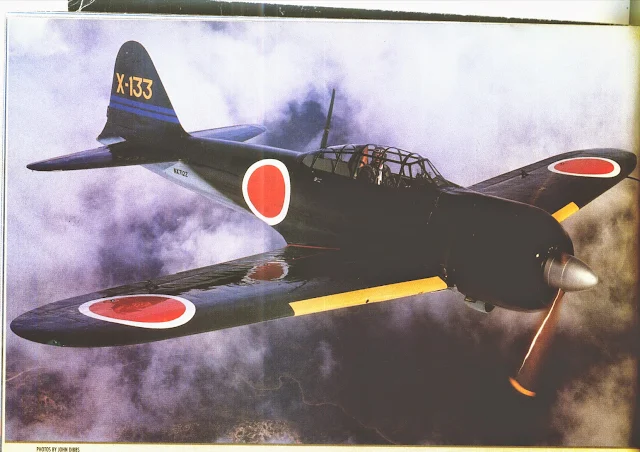







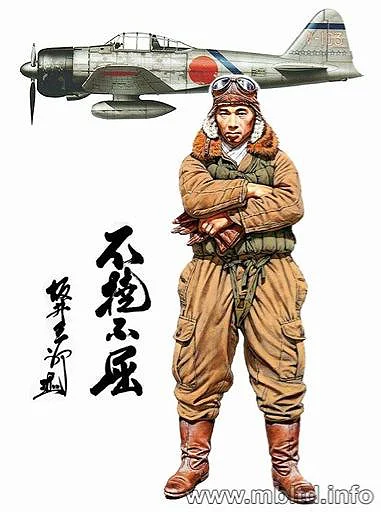






















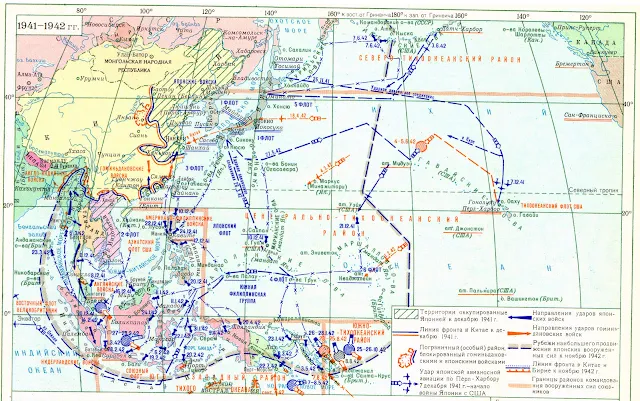











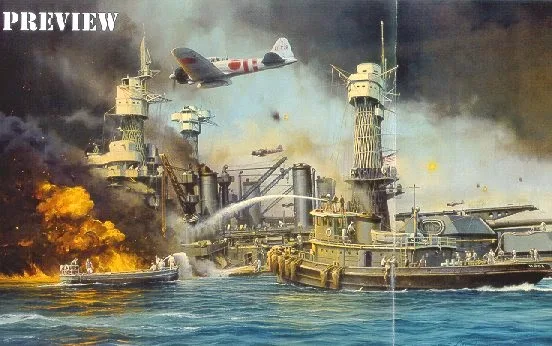




























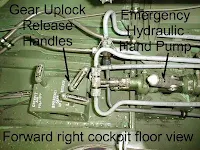
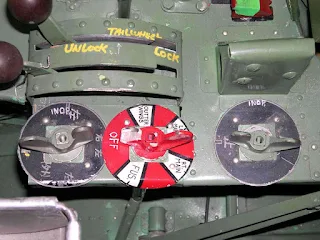








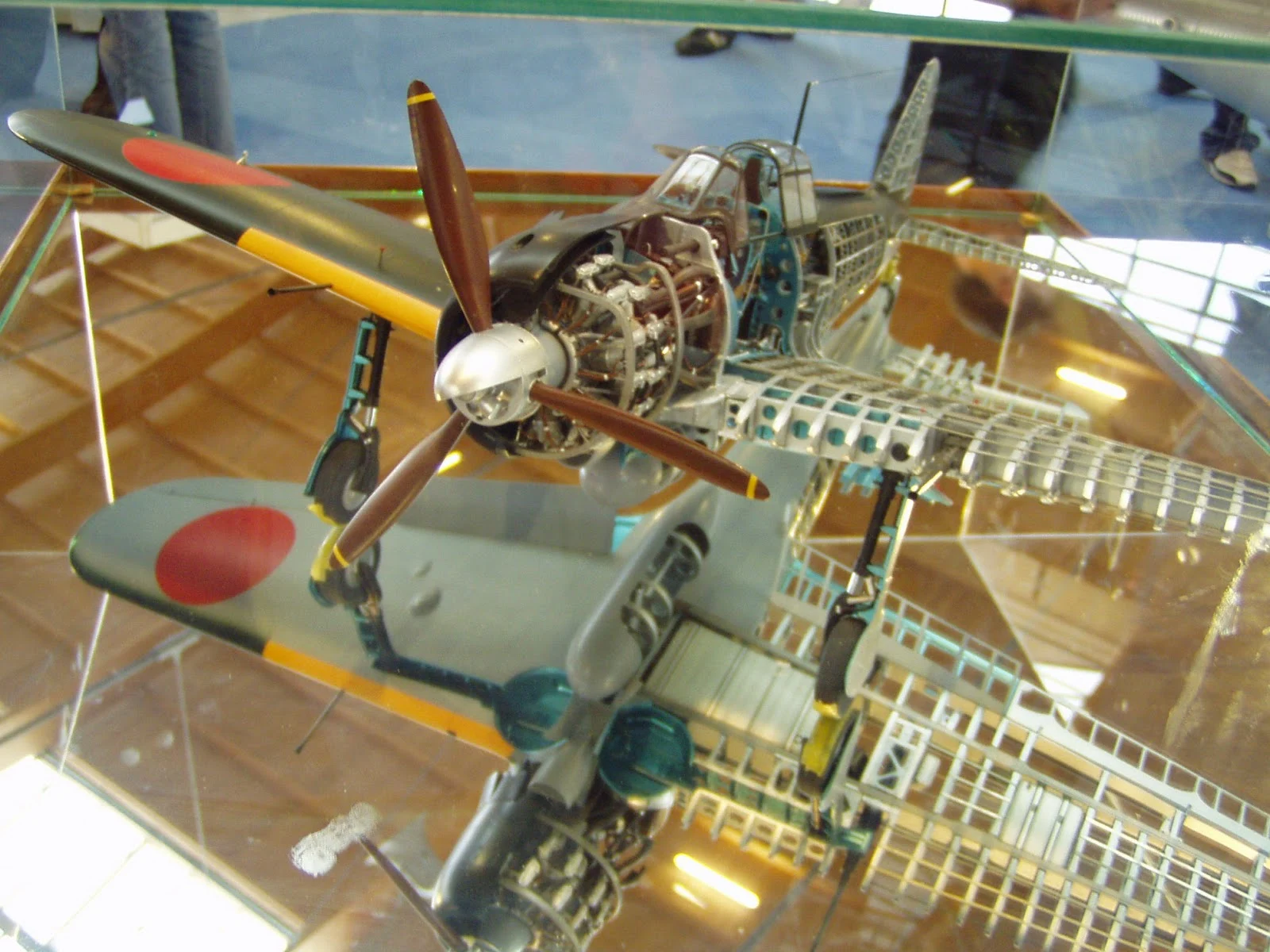






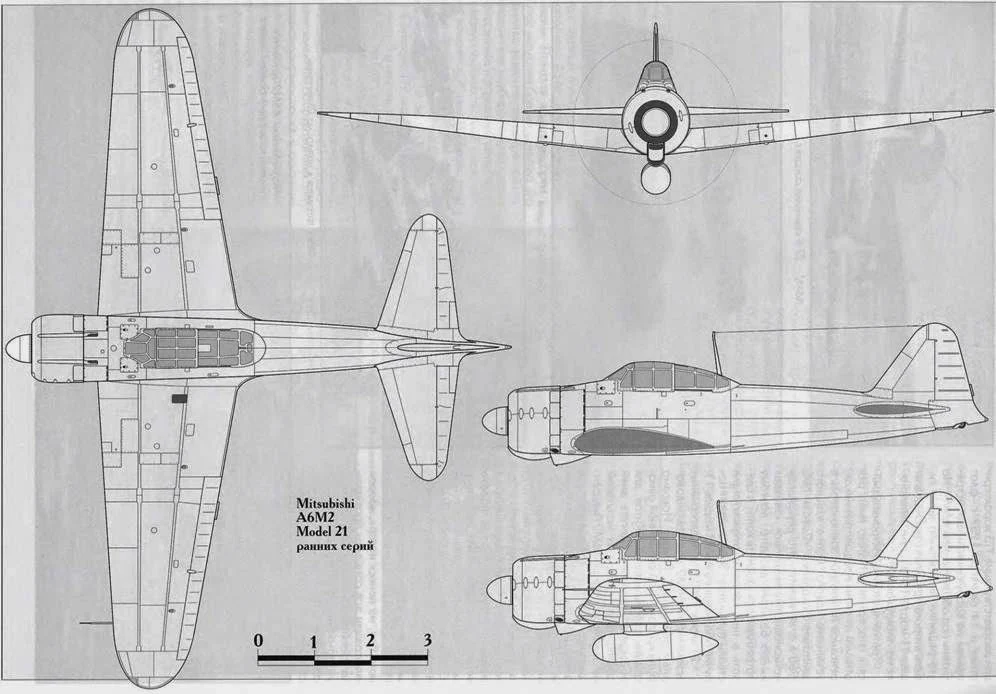






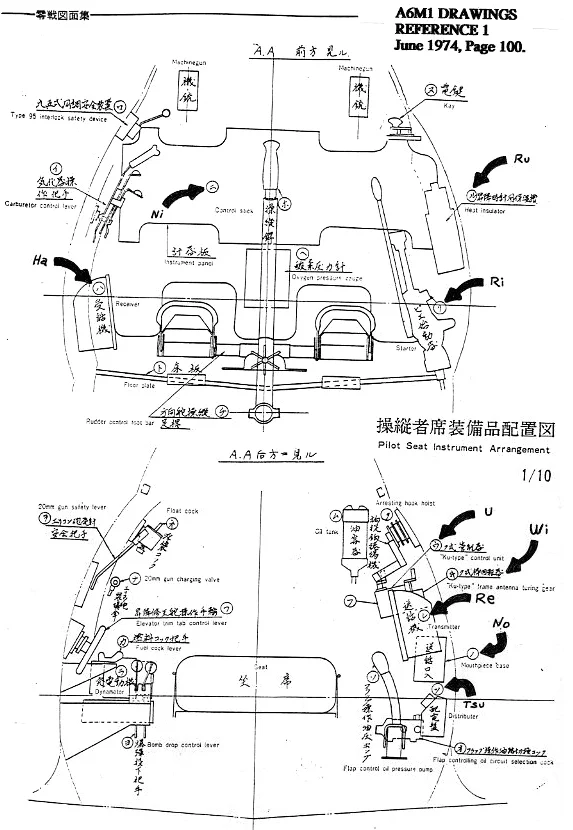























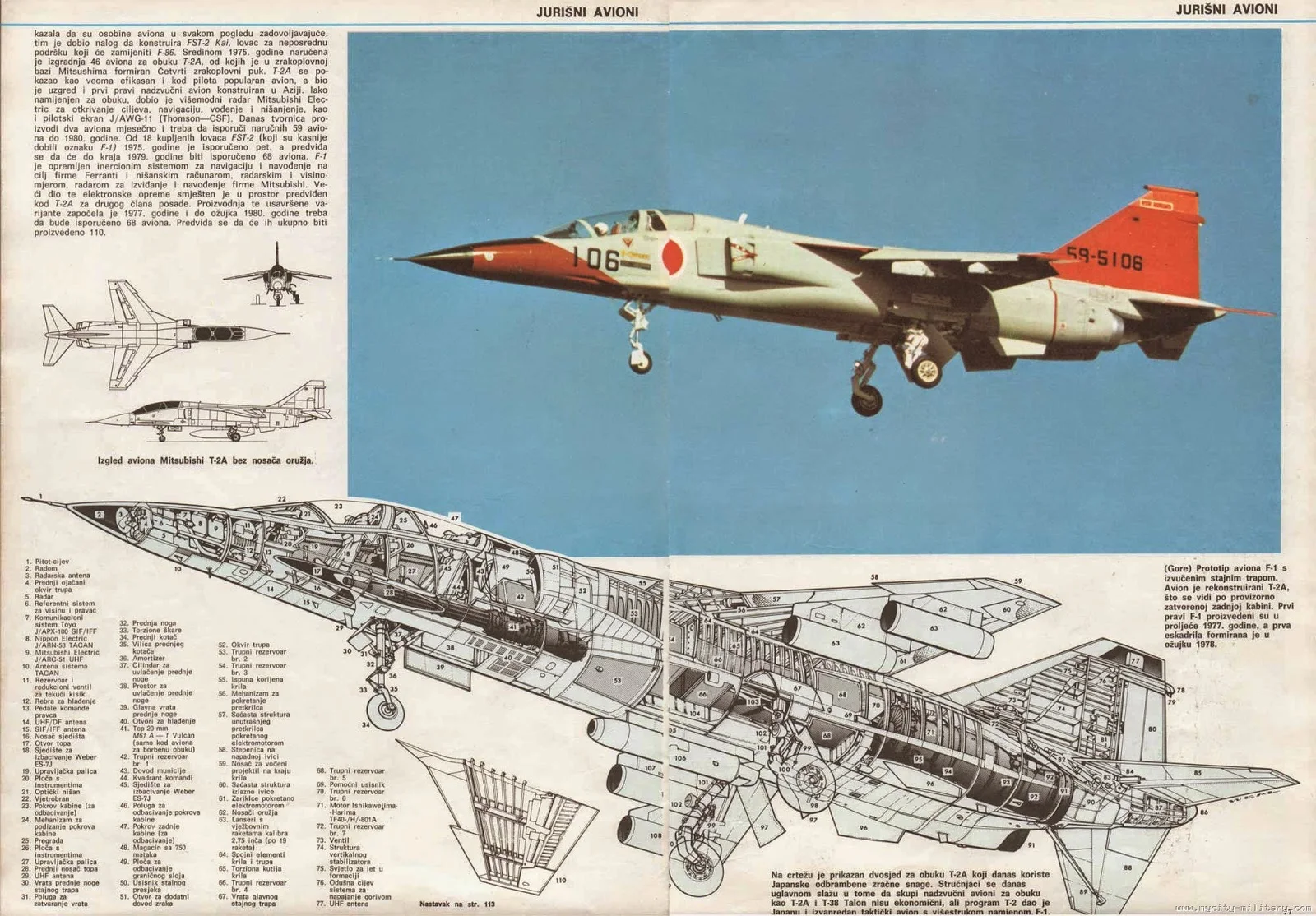













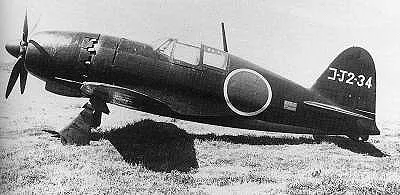





























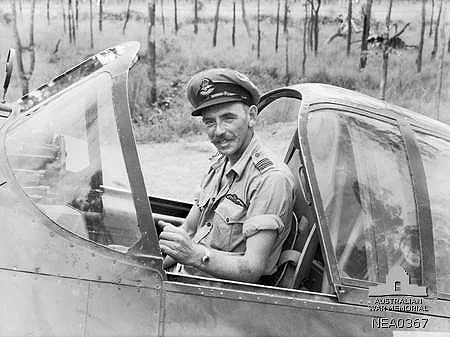


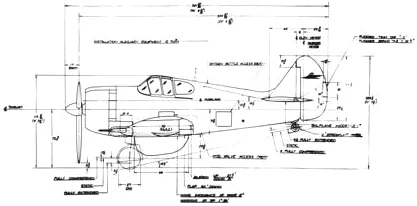






























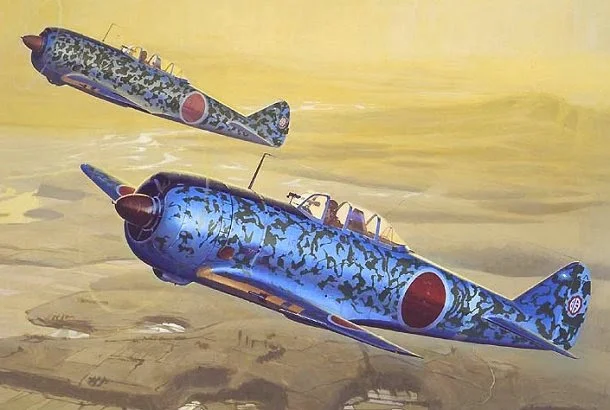

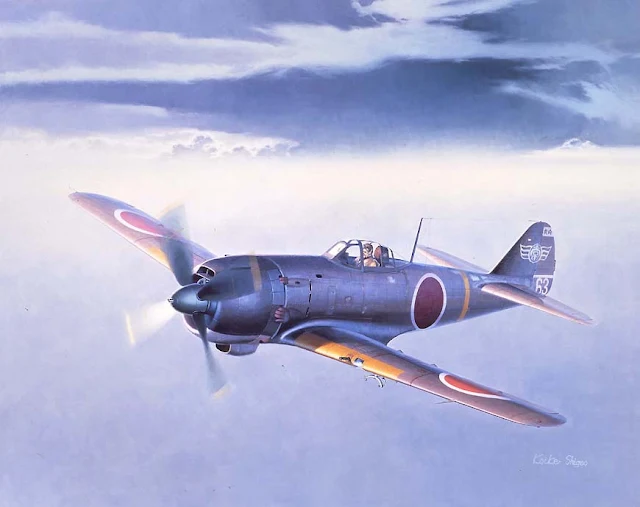





















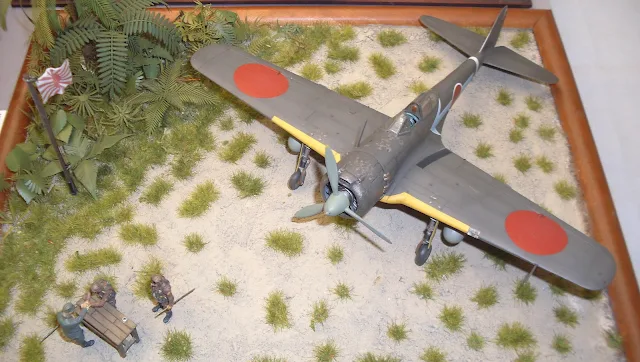
















%2B69b.jpg)






















































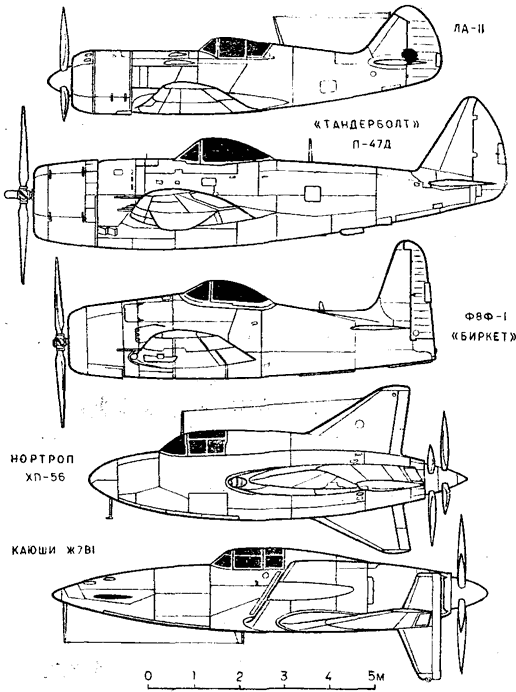







Nincsenek megjegyzések:
Megjegyzés küldése